Aleppo – Great Mosque حلب – جامع الكبير
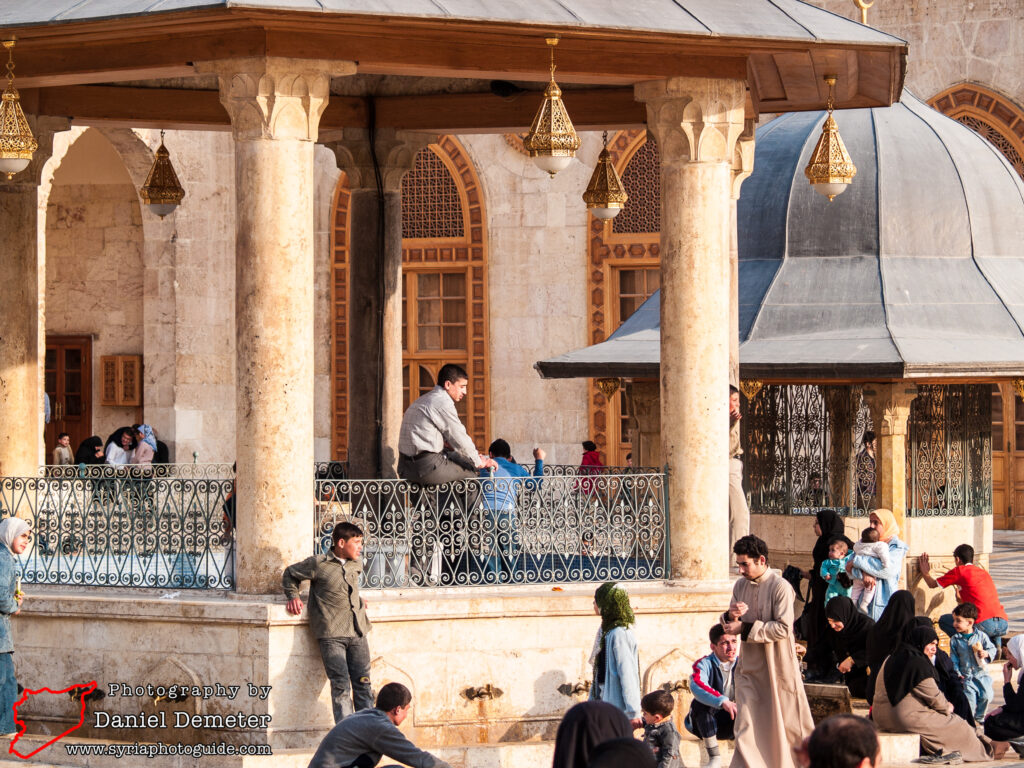
The Great Mosque of Aleppo (جامع حلب الكبير) is the largest and most well-known religious monument in the old city of Aleppo (حلب). Construction of the original mosque at this site began under al-Walid Bin Abd al-Malik (الوليد بن عبد الملك), the Umayyad caliph from 705 until his death in 715. The building was completed during the reign of his successor and brother, Suleiman Bin Abd al-Malik (سليمان بن عبد الملك). Based upon these origins, the mosque is sometimes referred to as the Umayyad Mosque (الجامع الاموي). However, most of the present structure dates to the later Seljuq and Mamluk periods.
Before construction of the Great Mosque of Aleppo (جامع حلب الكبير), the site served as the garden and cemetery of the Byzantine Cathedral of St. Helen, now al-Madrasa al-Halawiyeh (المدرسة الحلوية). Prior to that, it was the location of the Roman and Hellenistic agora (public assembly place). Most of the original Umayyad-era mosque was destroyed by fire in 1169, and it was almost entirely rebuilt in subsequent years during the reign of Nur al-Din Mahmoud Zenki (نور الدين محمود زنكي). The mosque was destroyed again in 1260, this time by the Mongols. It was again reconstructed during the Mamluk period.
Perhaps the most remarkable feature of the Great Mosque of Aleppo (جامع حلب الكبير) is the Seljuq-era minaret, in the northwestern corner of the complex (overlooking the present main entrance). The minaret was constructed between 1090 and 1092 during the reign of Abu Said Taj al-Dawleh Tatash al-Seljuqi (أبو سعيد تاج الدولة تتش السلجوقي), and survived the 1169 fire. Designed by a local architect, it would inspire later developments during the Ayyubid and Mamluk periods. It has been described as the principal monument of medieval Syria by archaeologist Ernst Herzfeld. The minaret is divided into five sections and features bands of Kufic inscriptions above each. Above the final band are muqarnas niches and a gallery for the muezzin that is covered by a wooden veranda. There are many similarities to the minaret in Maarat al-Naaman (معرة النعمان), although decoration of the latter is far more basic and restrained.
The Great Mosque of Aleppo (جامع حلب الكبير) is built around a large rectangular courtyard, with the prayer hall to the south and arcaded halls on the remaining three sides. Two covered fountains are off-centered, located in the northeastern quarter of the courtyard. The prayer hall features three lengthwise aisles each lined with eighteen quadrangular columns and covered by cross-vaulted arcades (part of the Mamluk-era reconstruction). There is a single dome placed over the center of the middle aisle, in front of the mihrab. The beautifully carved wooden minbar, to the right, dates to the 15th century. The room to the left of the mihrab is said to contain the tomb of Zakariyeh (زكريا), the father of John the Baptist (يوحنا المعمدان).
Extensive restorations of the mosque were undertaken in the early 2000s. Despite the immense religious, historic and cultural significance of this mosque, militants operating in the old city engaged in clashes with the Syrian government in and around the building beginning in the autumn of 2012. Over the subsequent two years, massive destruction has been inflicted upon the mosque. On April 24th, 2013 the building’s magnificent minaret collapsed due to heavy artillery fire between combatants. The destruction of the Great Mosque of Aleppo (جامع حلب الكبير) represents one of the greatest losses of cultural heritage in Syria during the ongoing conflict.
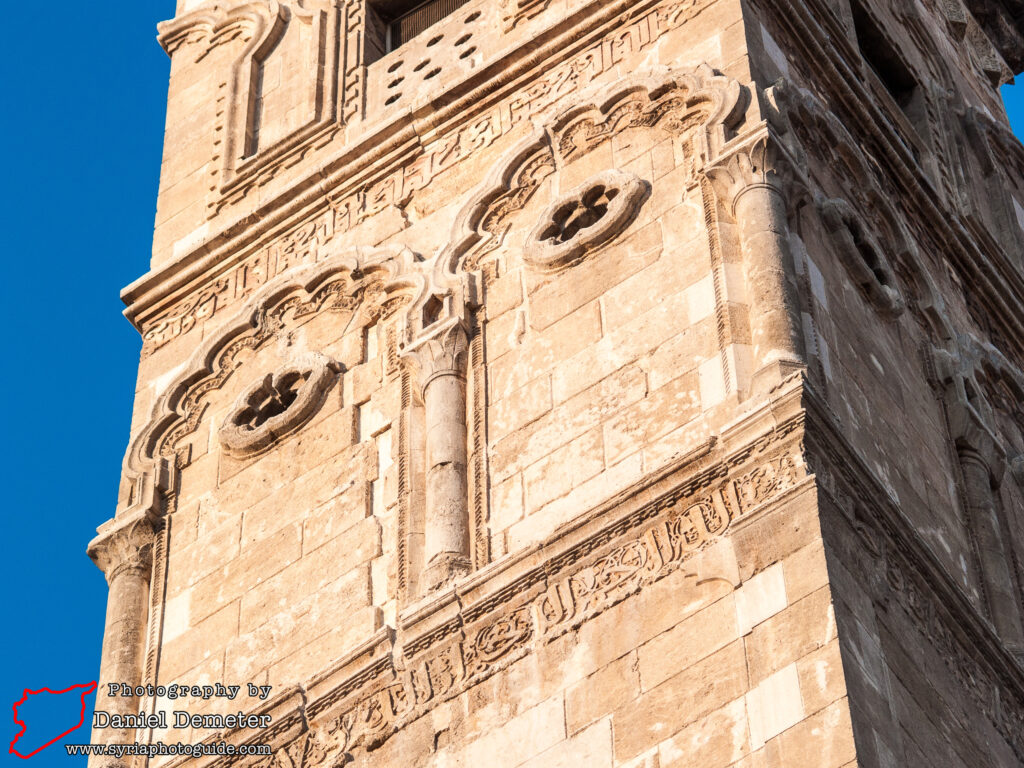
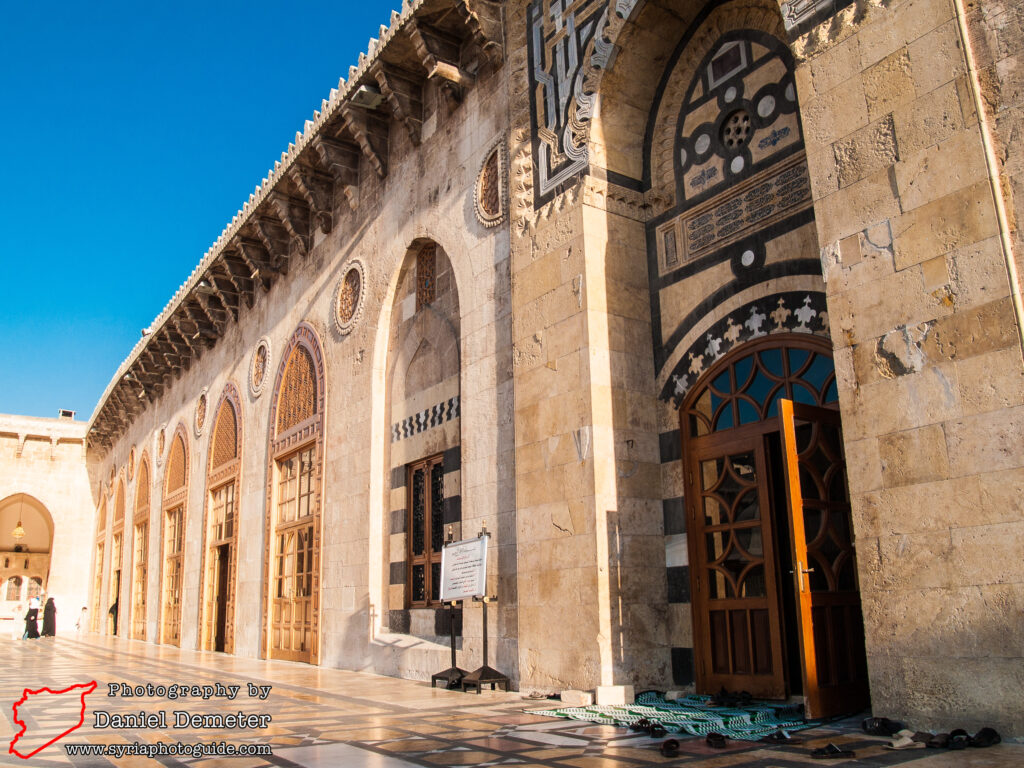
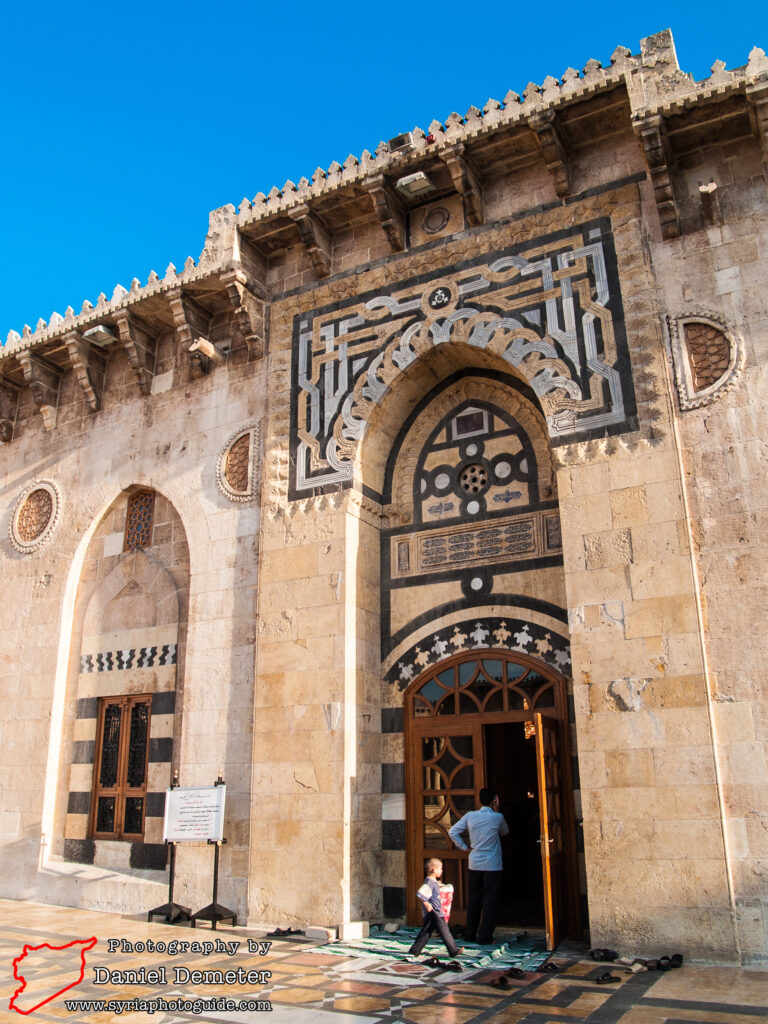
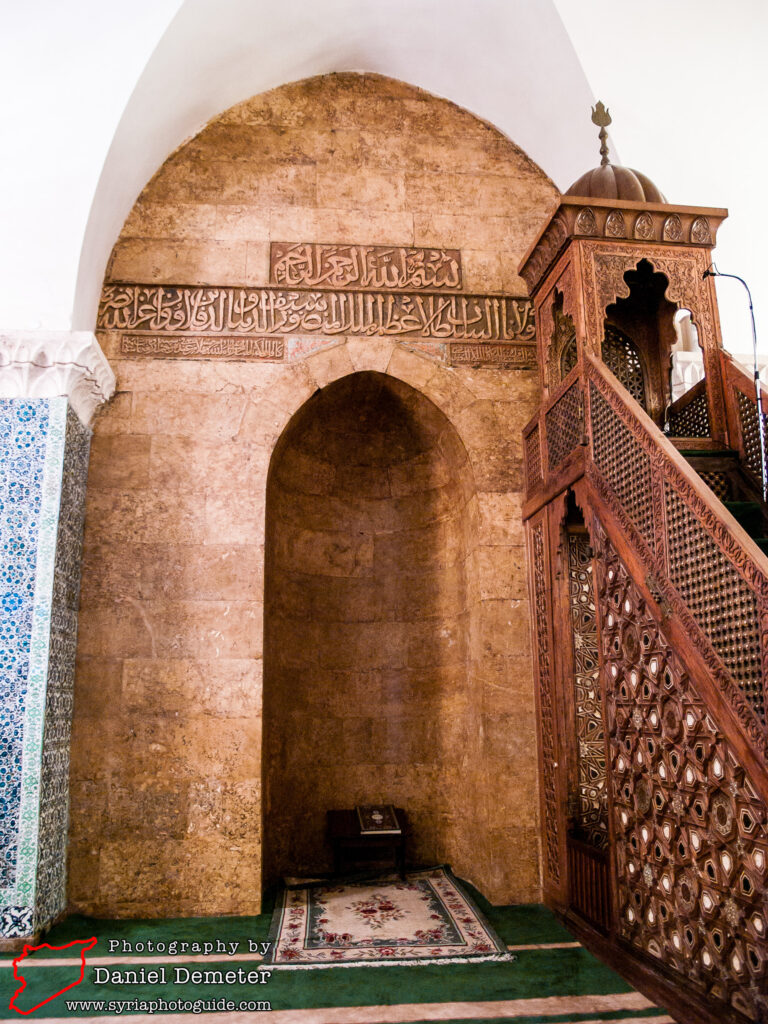
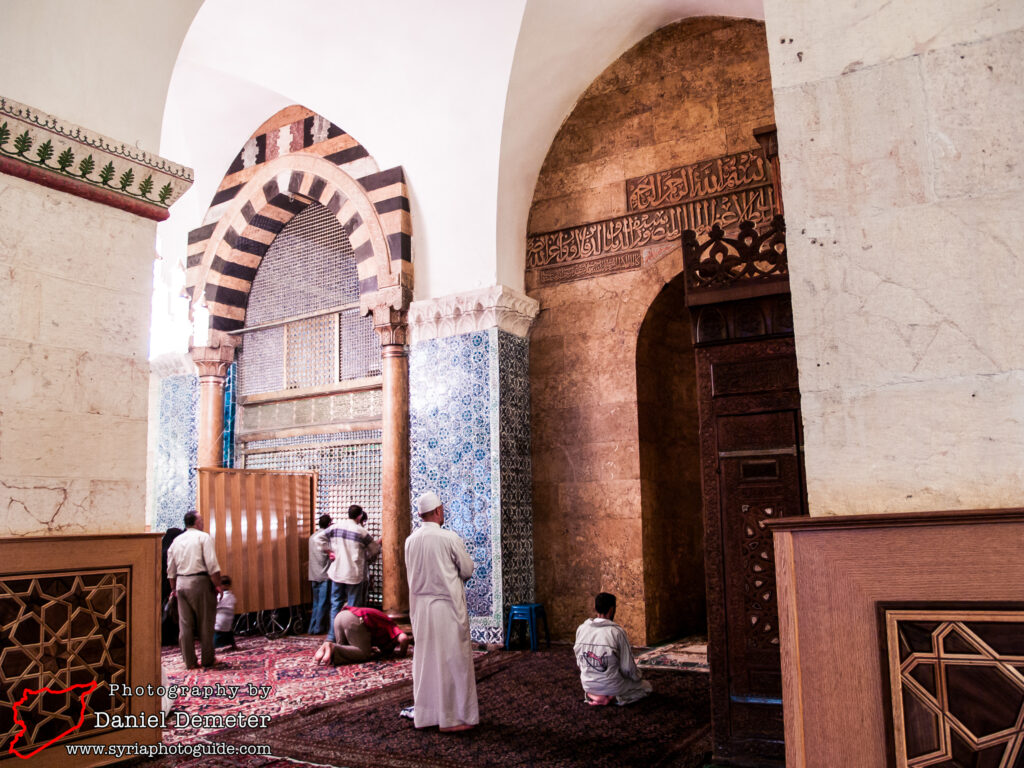
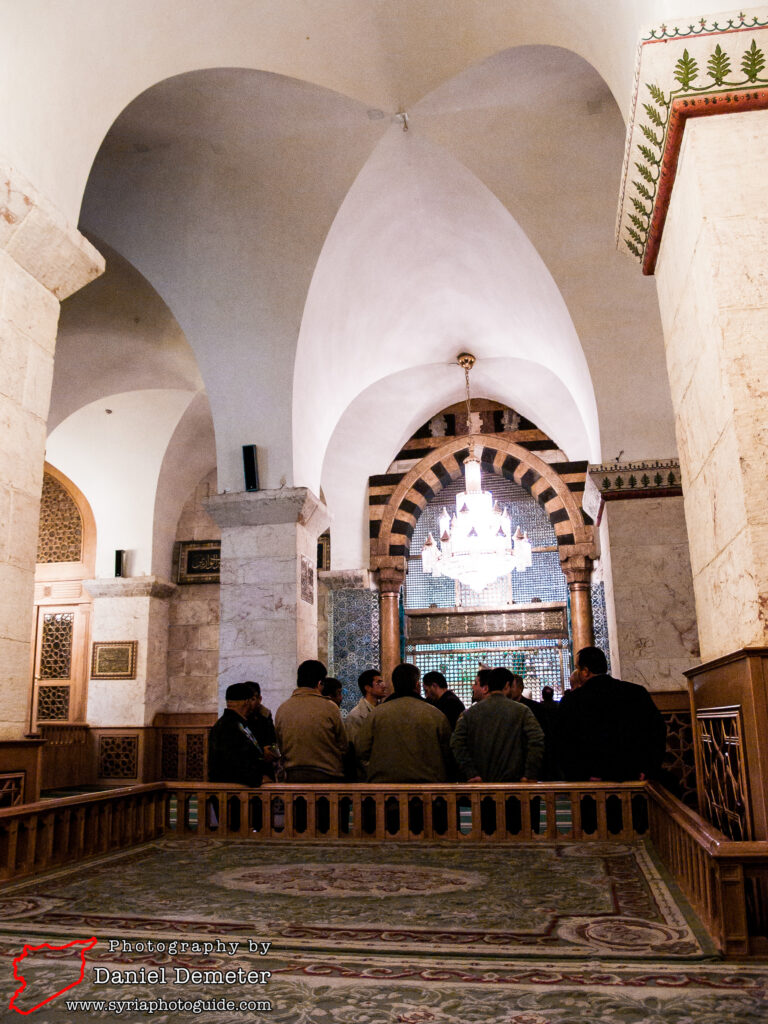
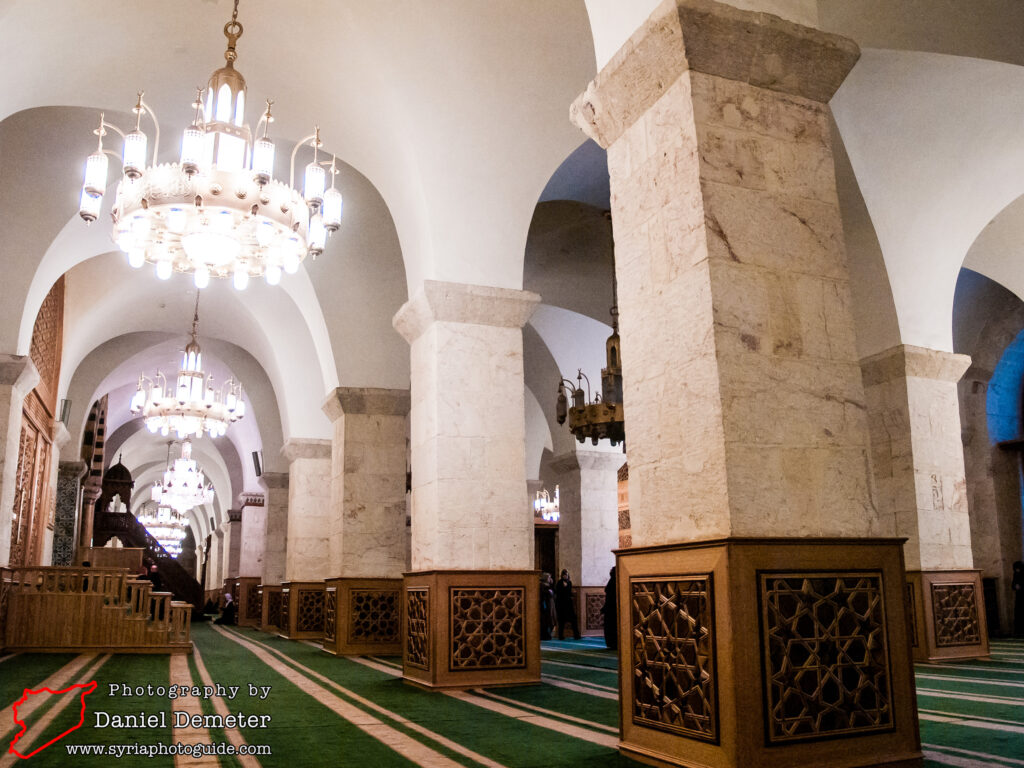
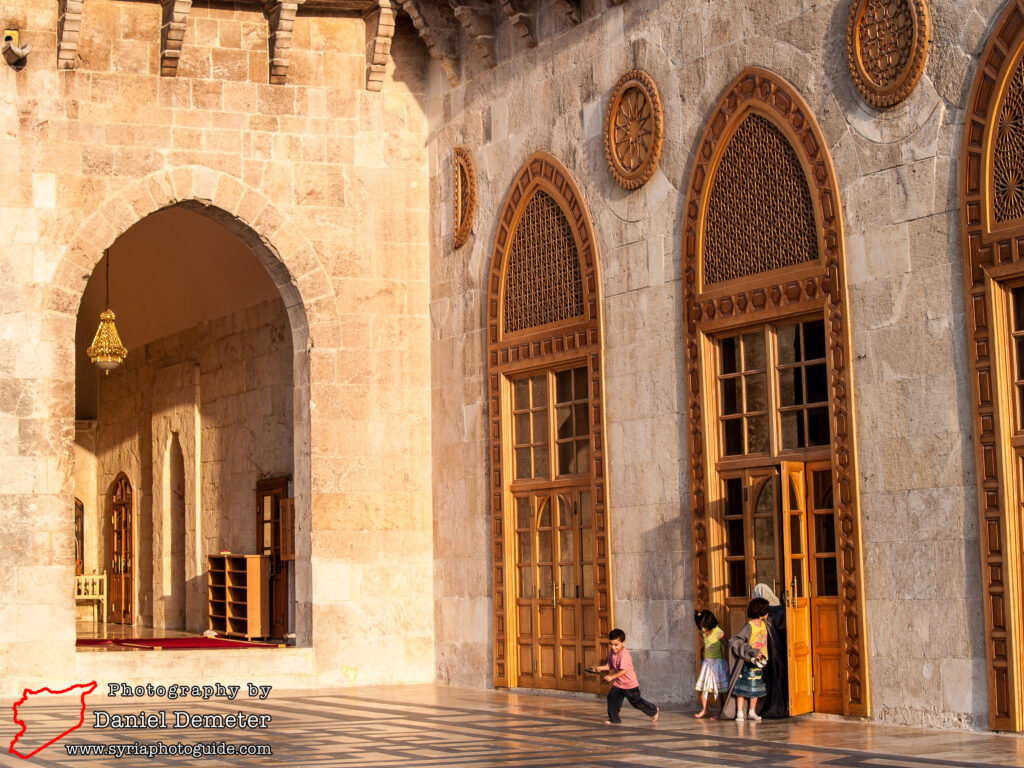
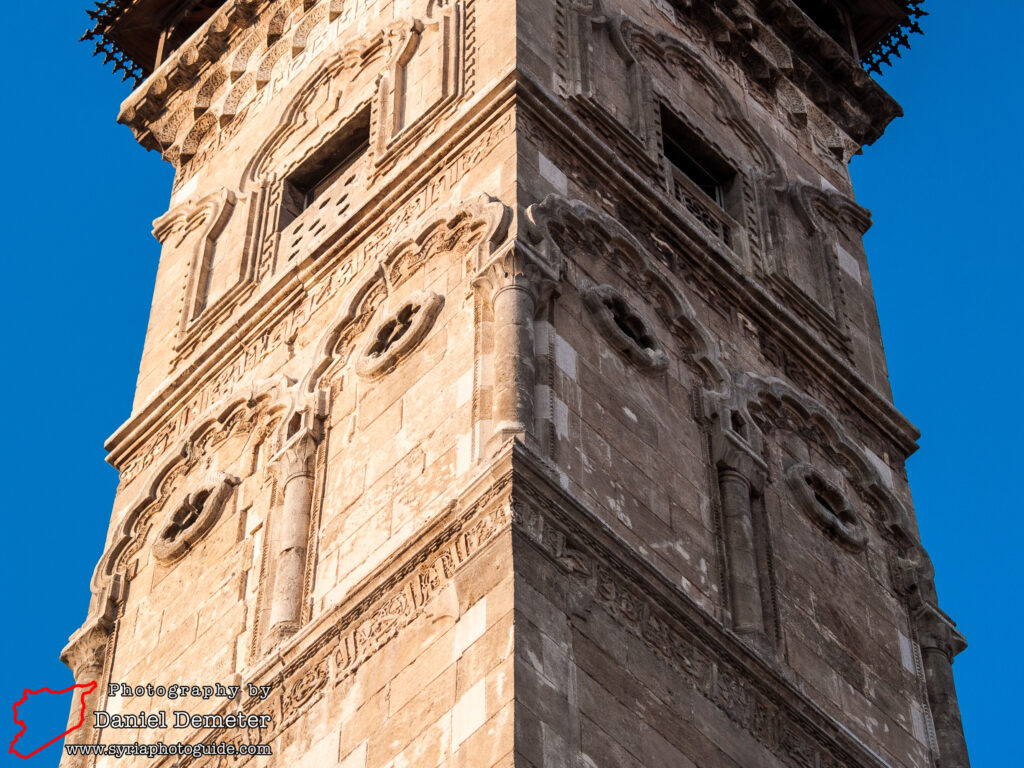
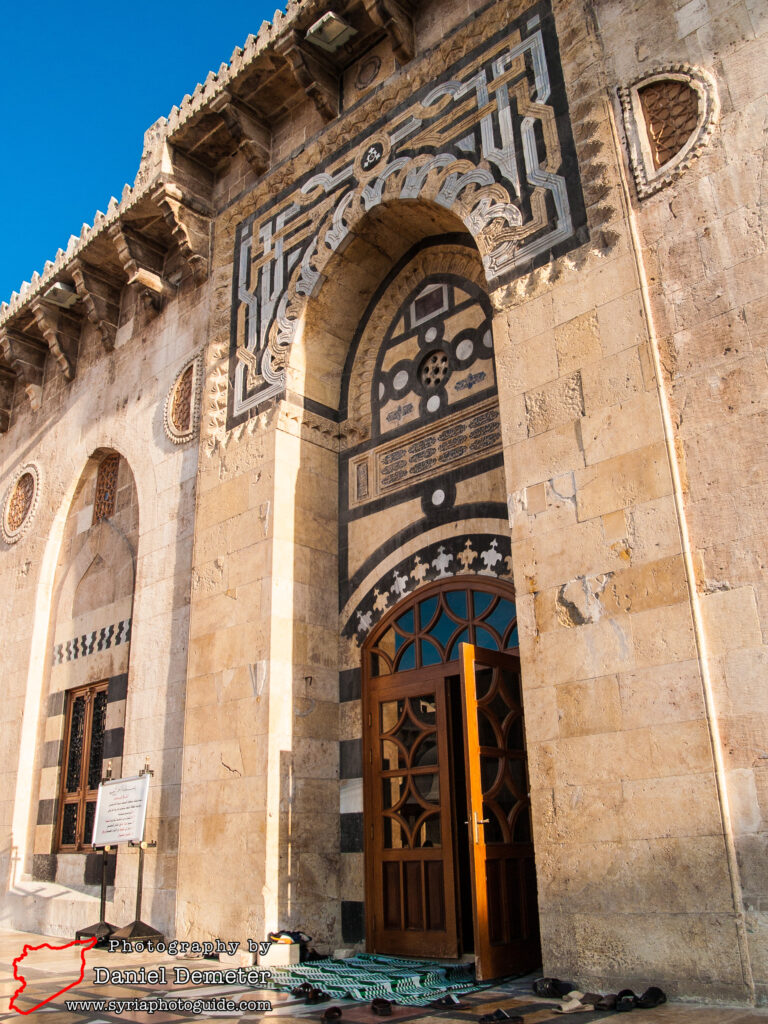

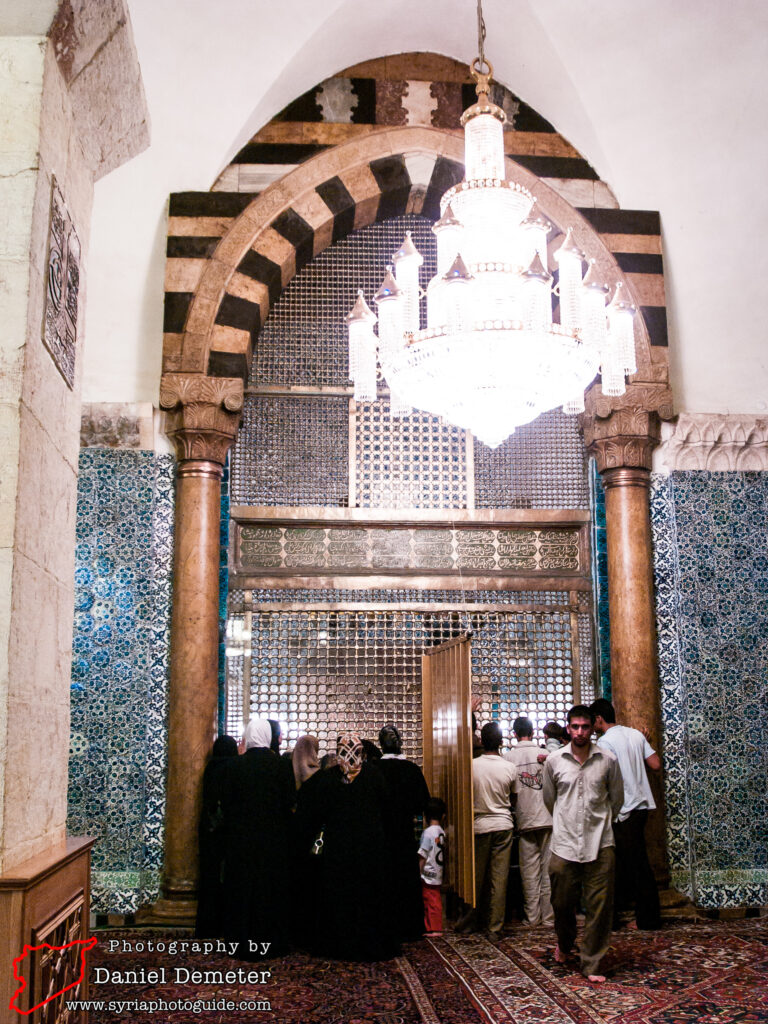
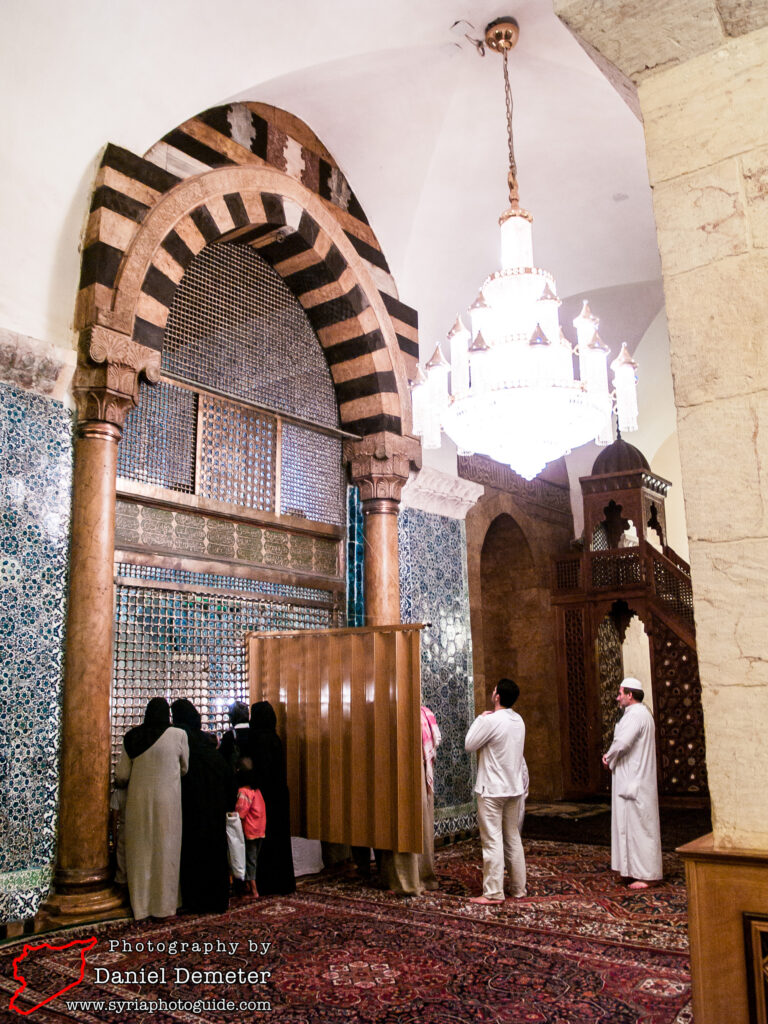
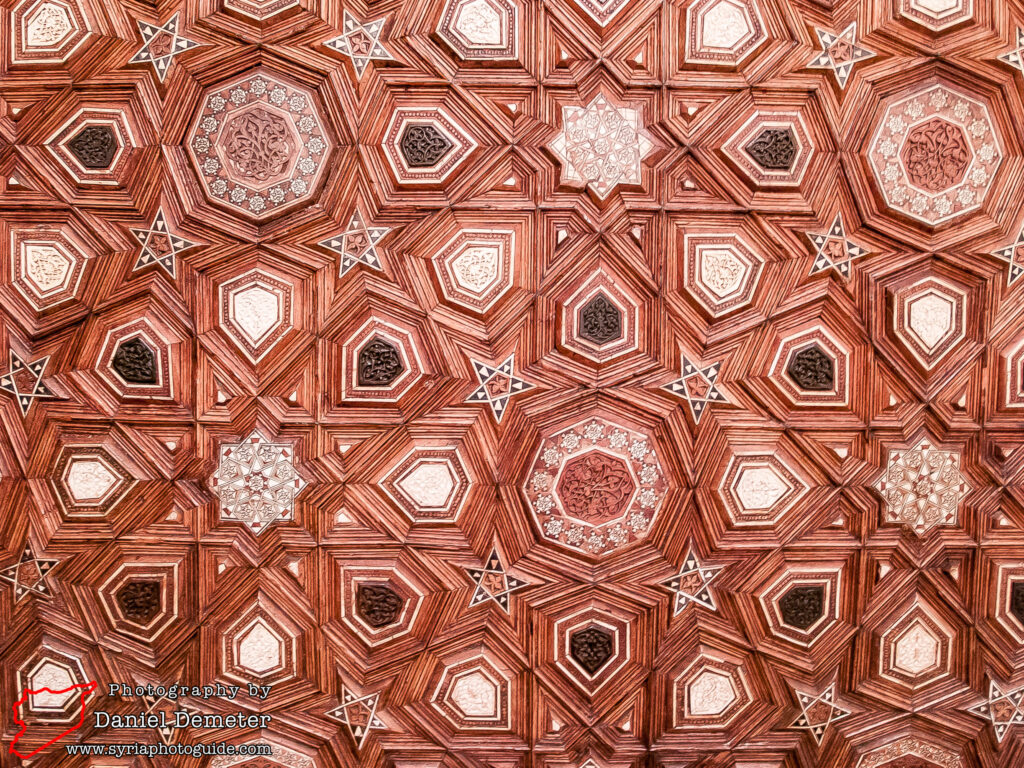
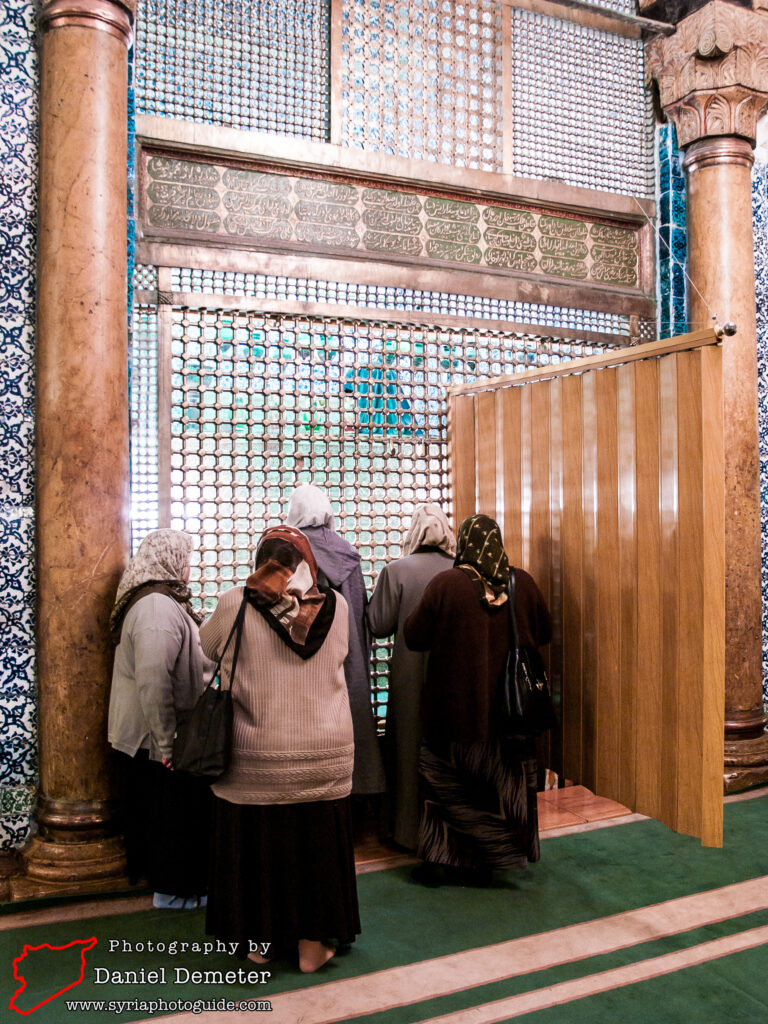
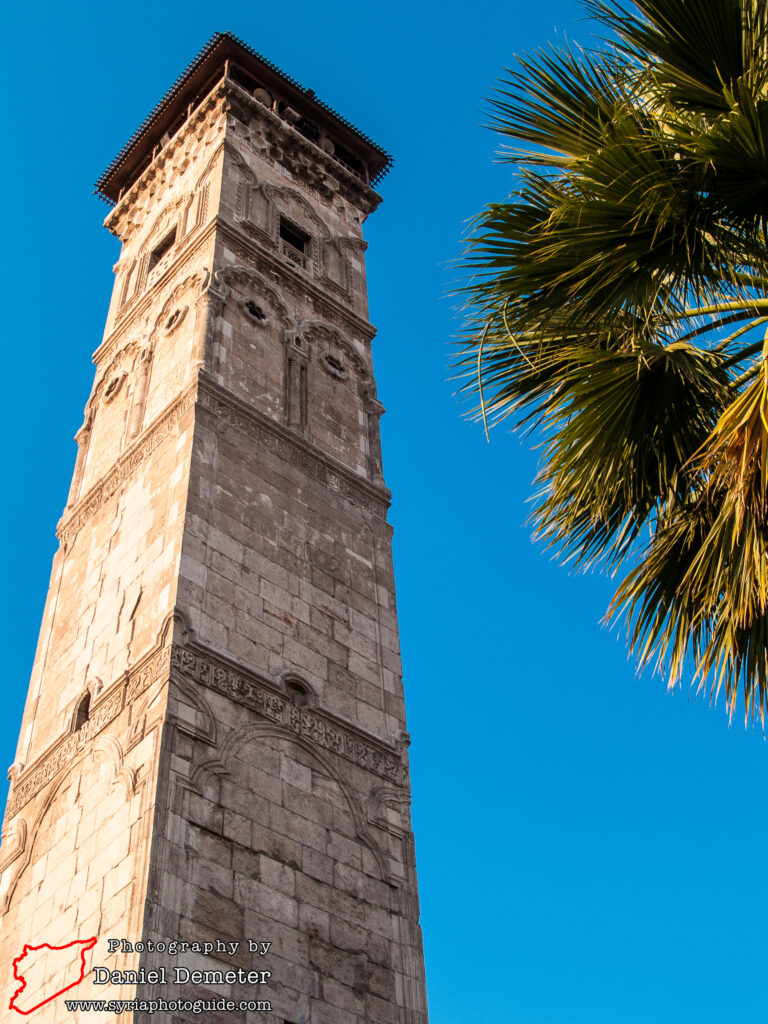
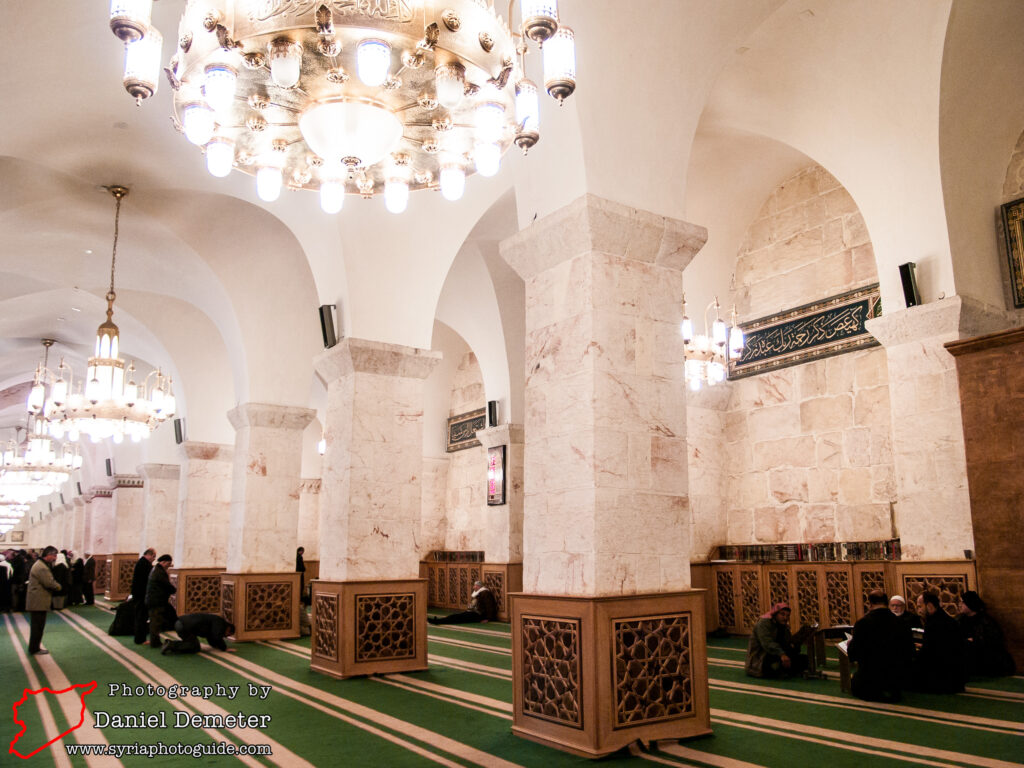
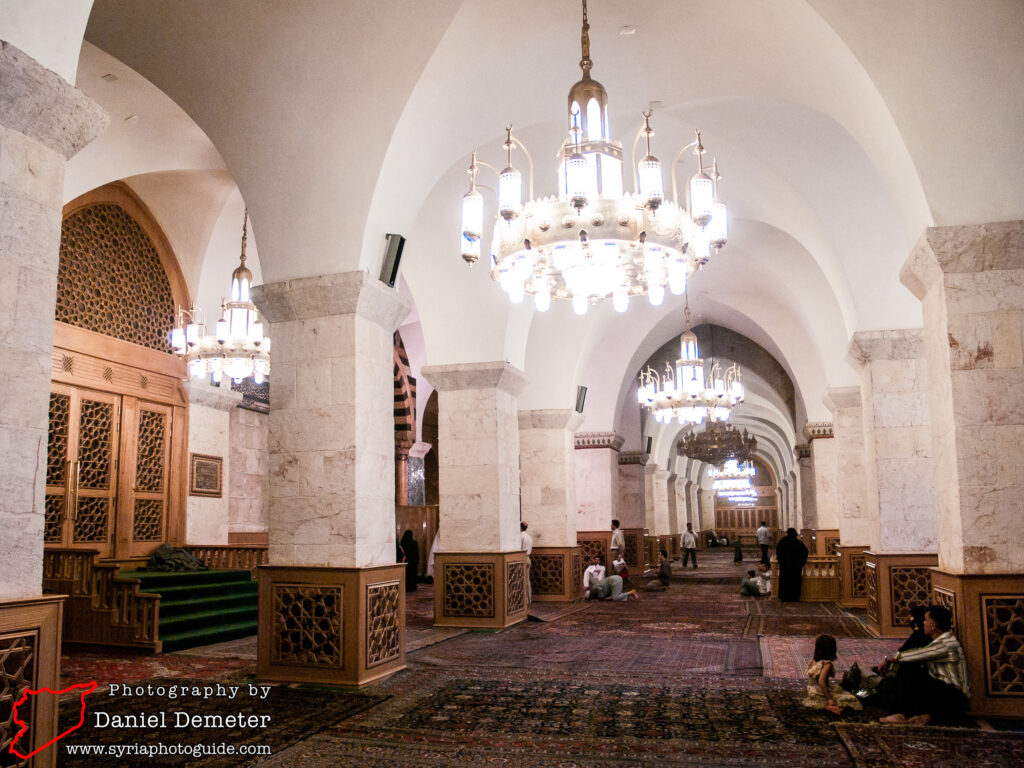
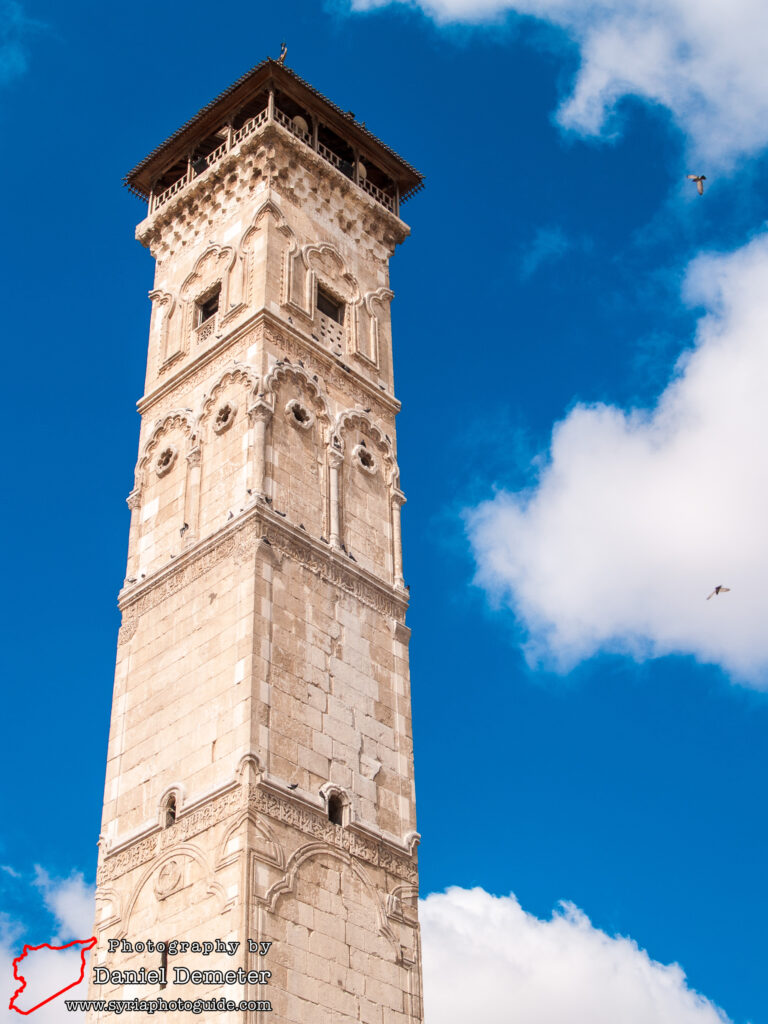
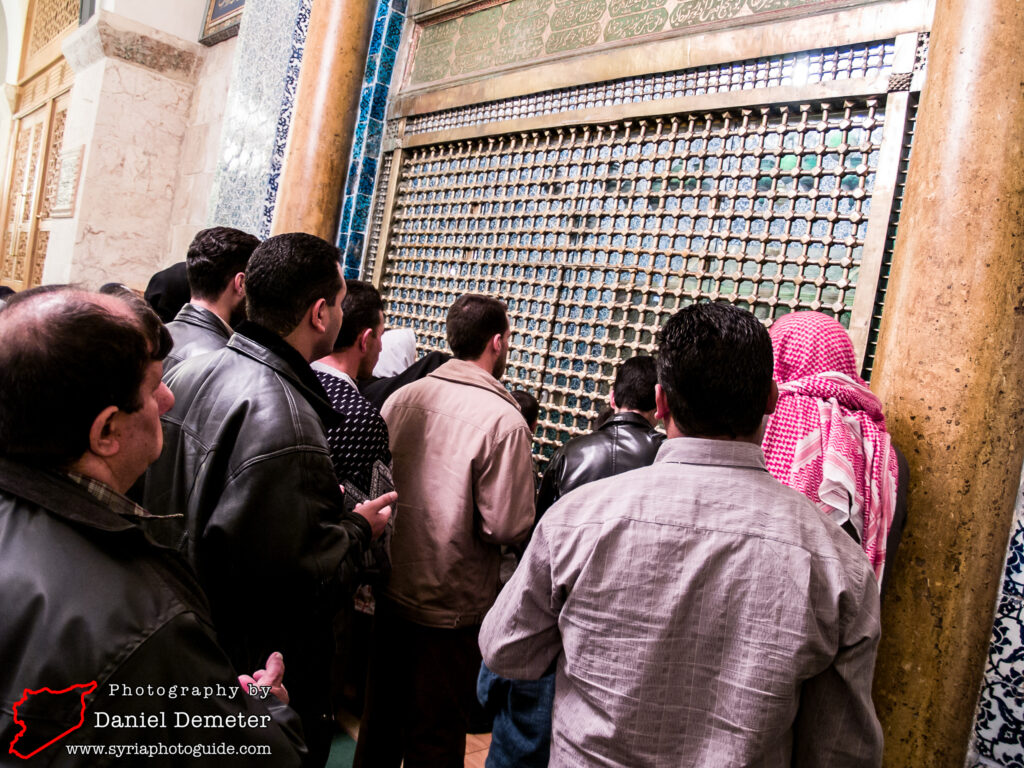
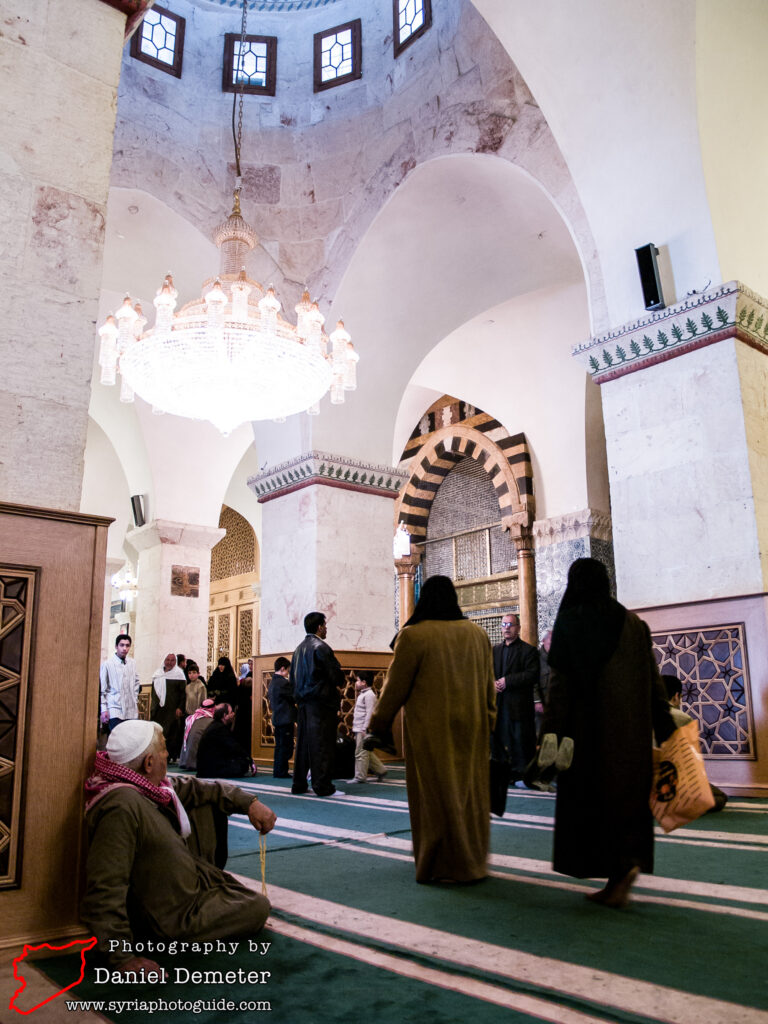
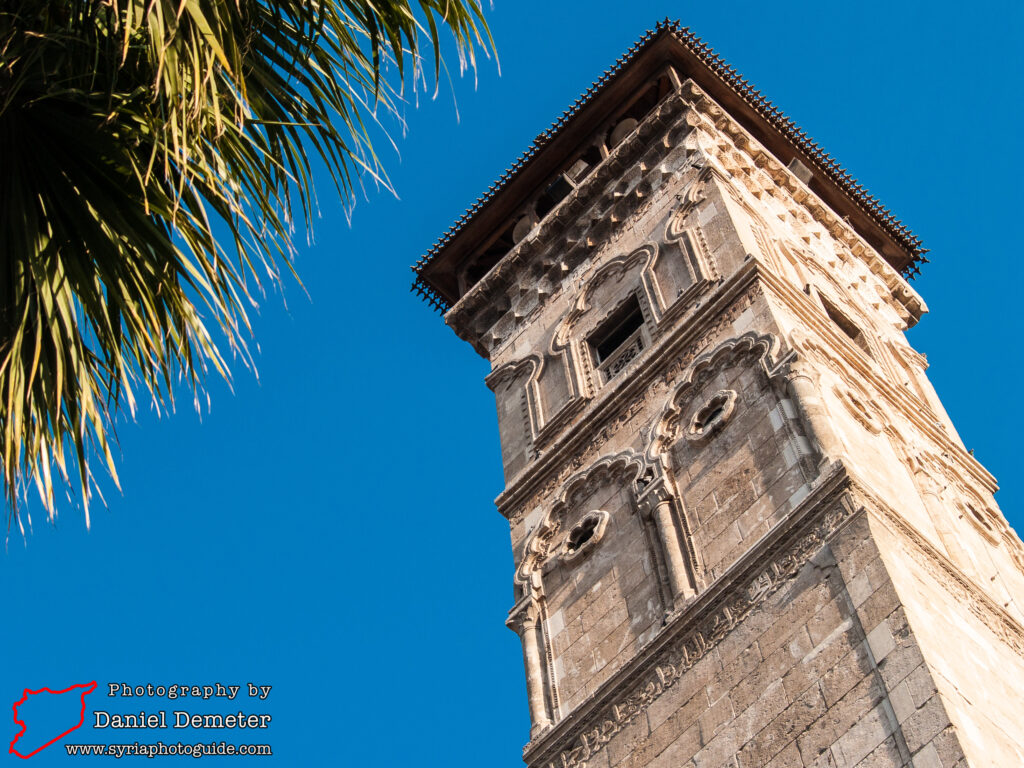
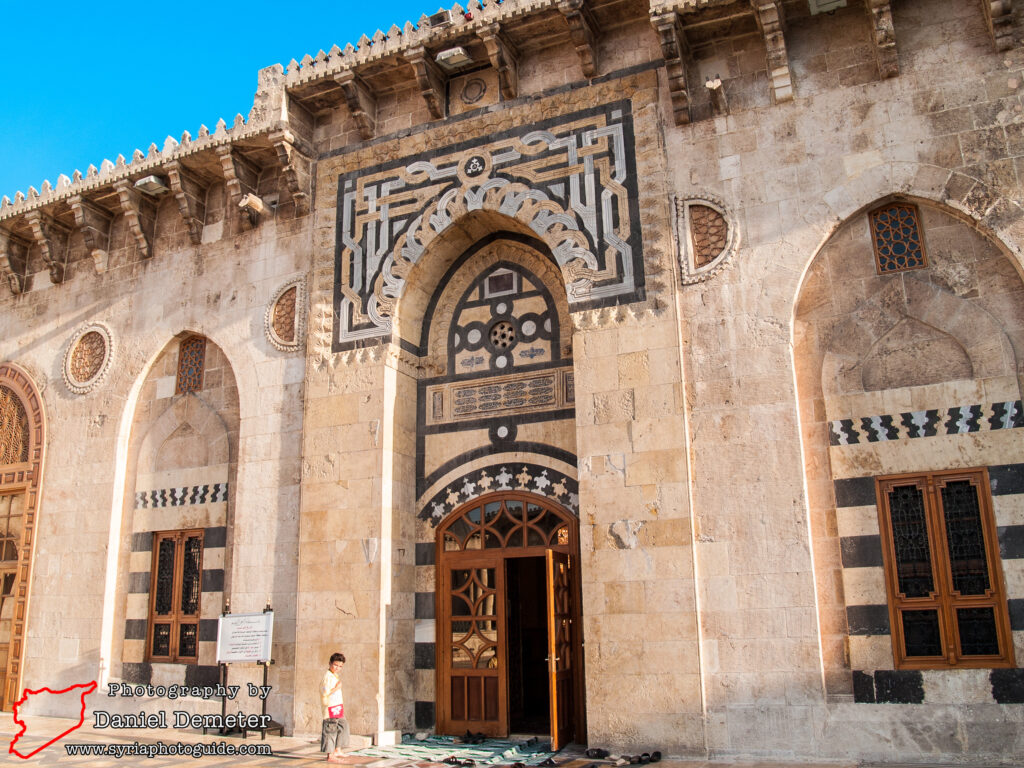
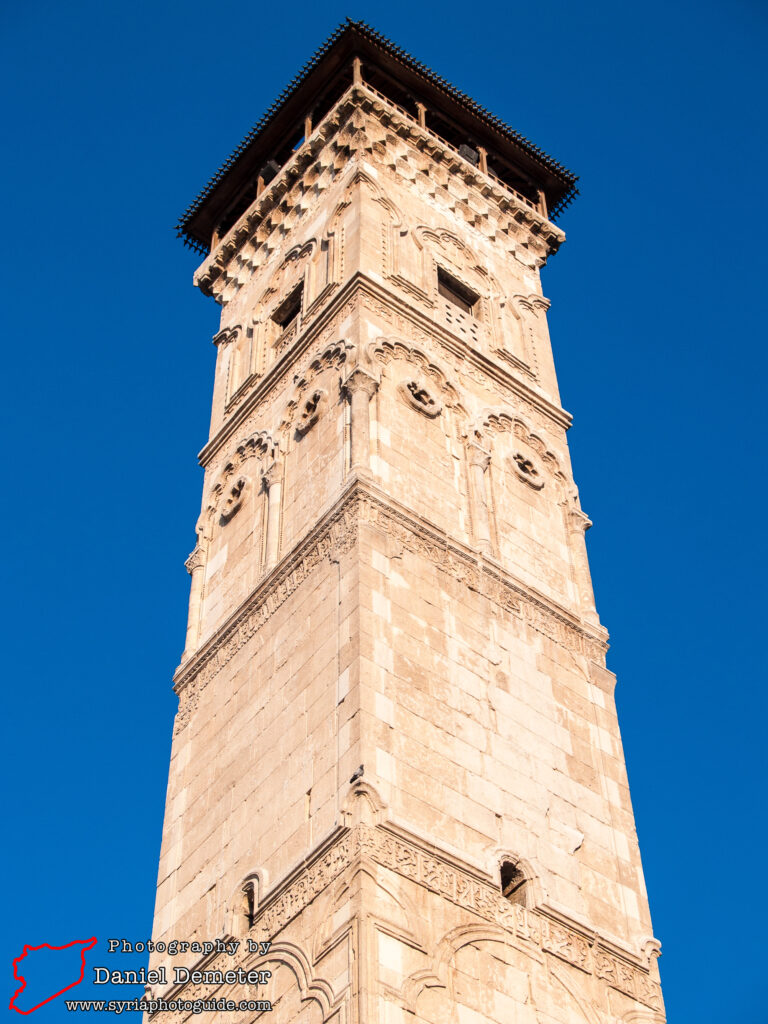
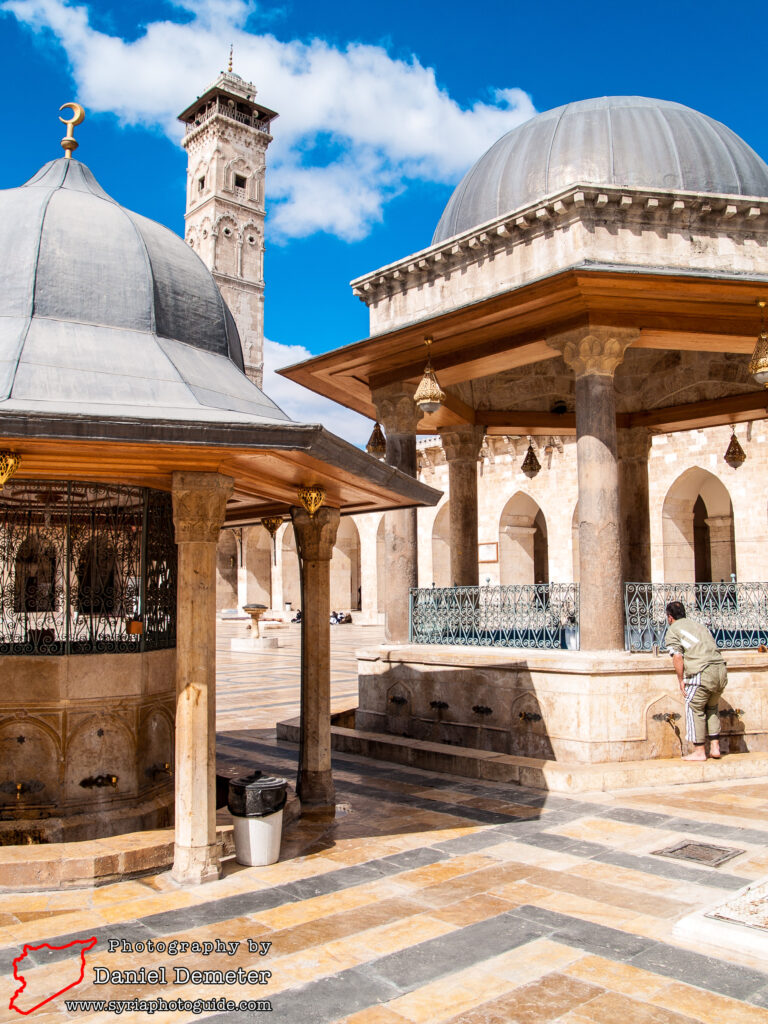
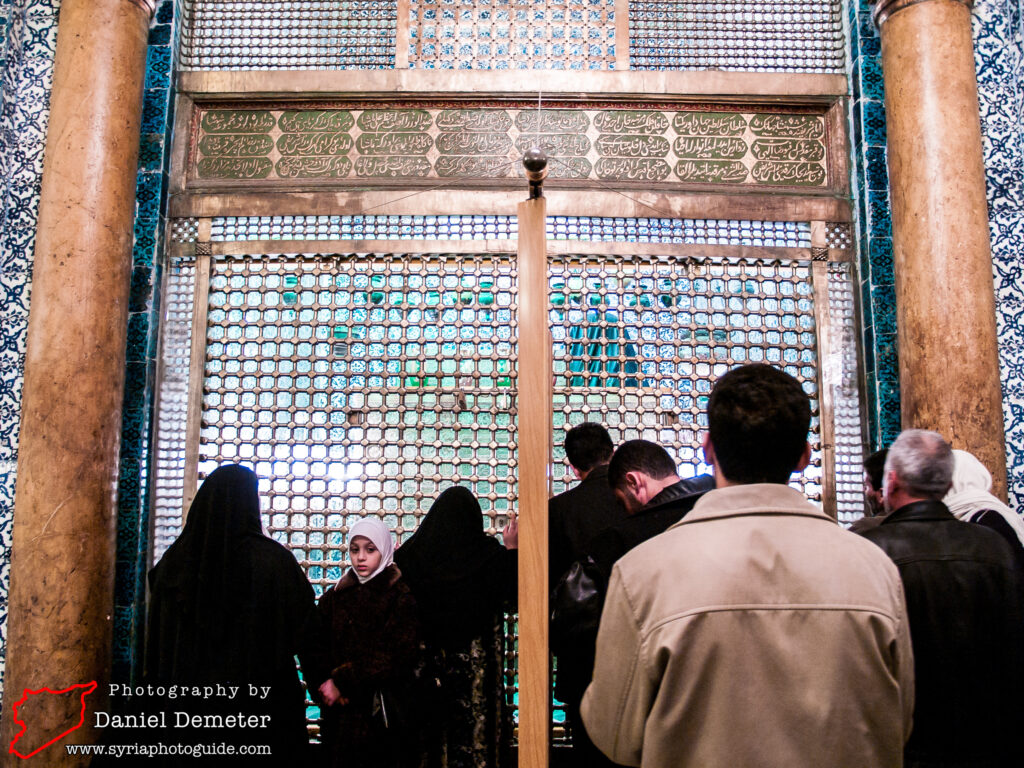
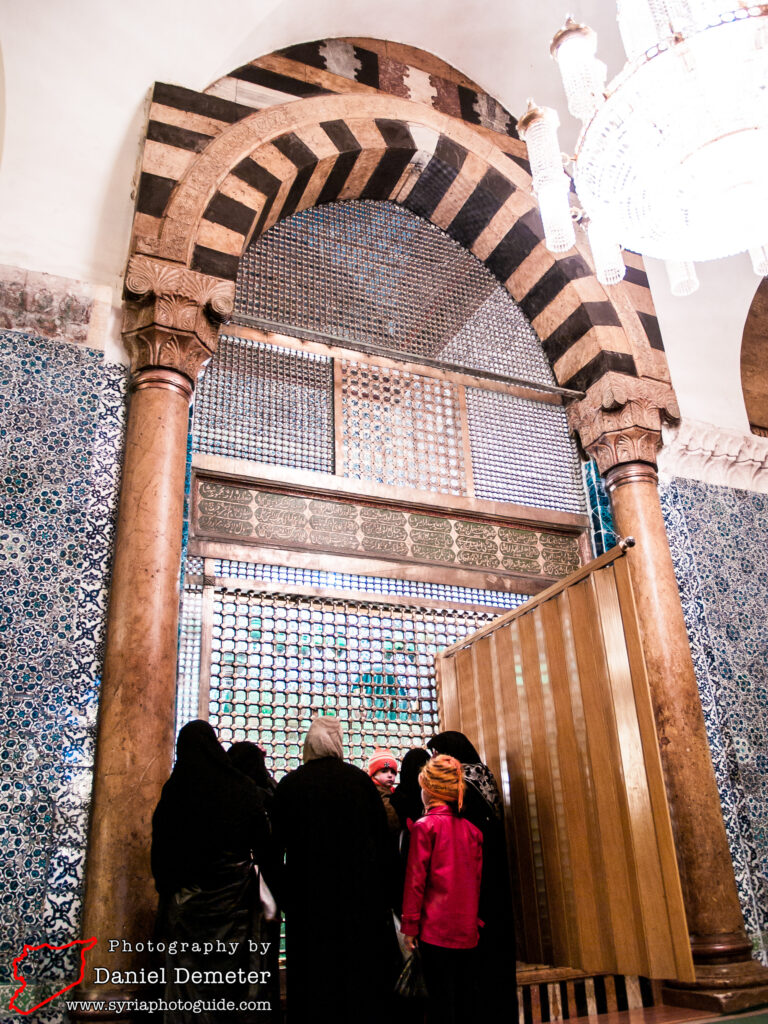
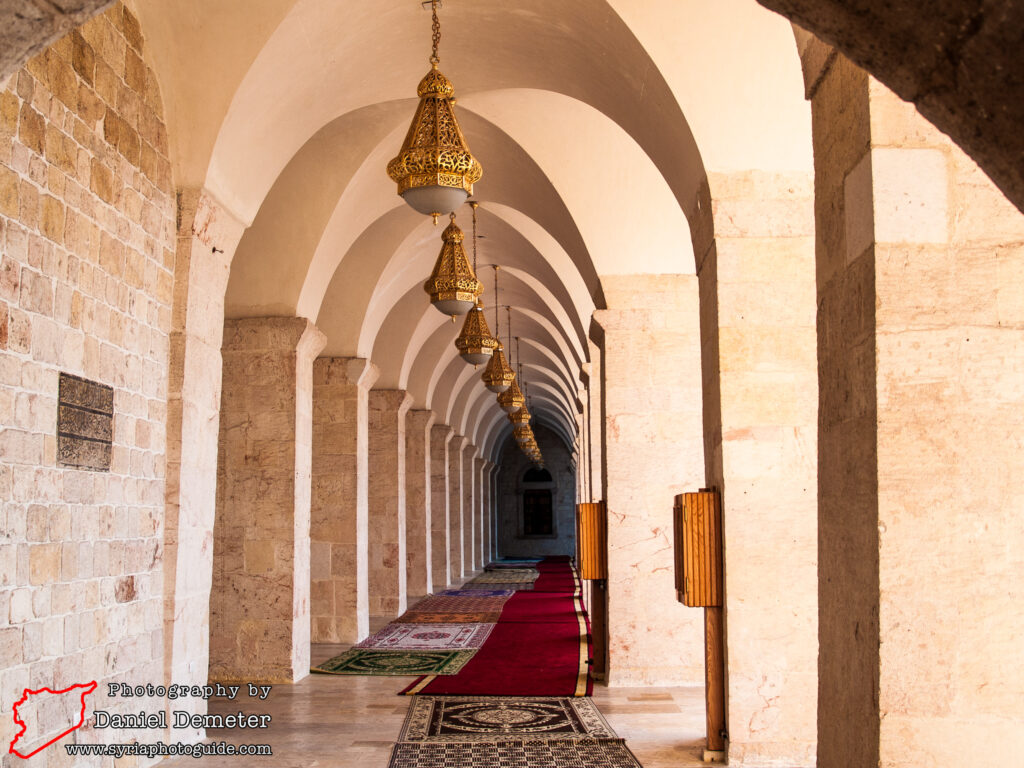
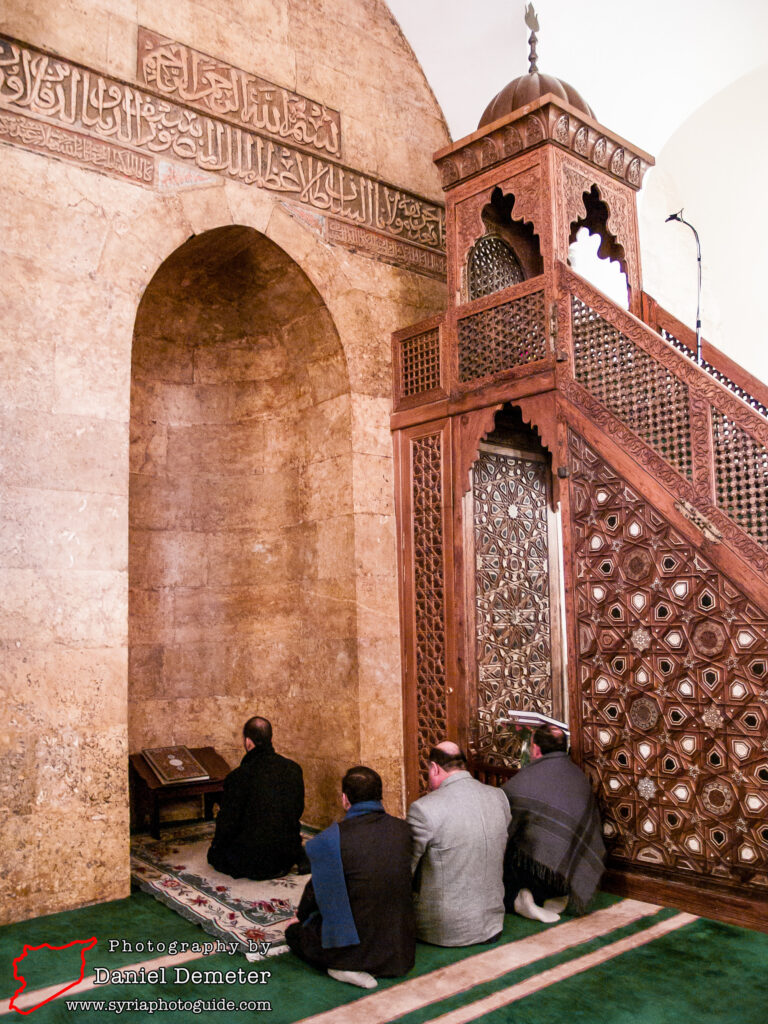
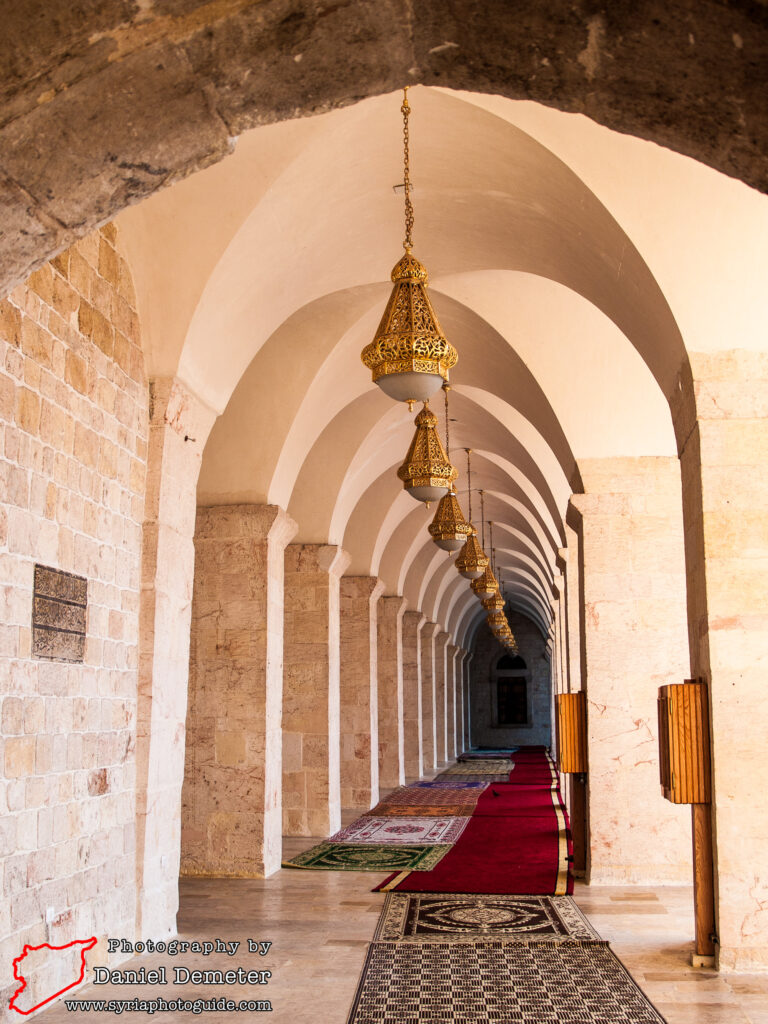
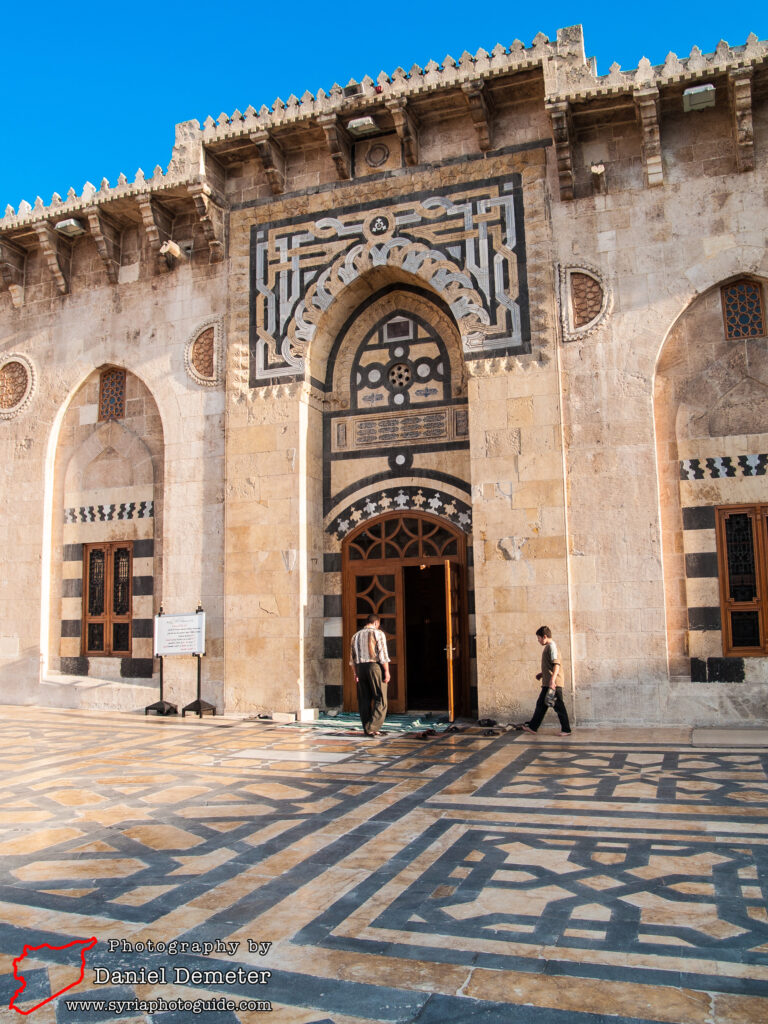
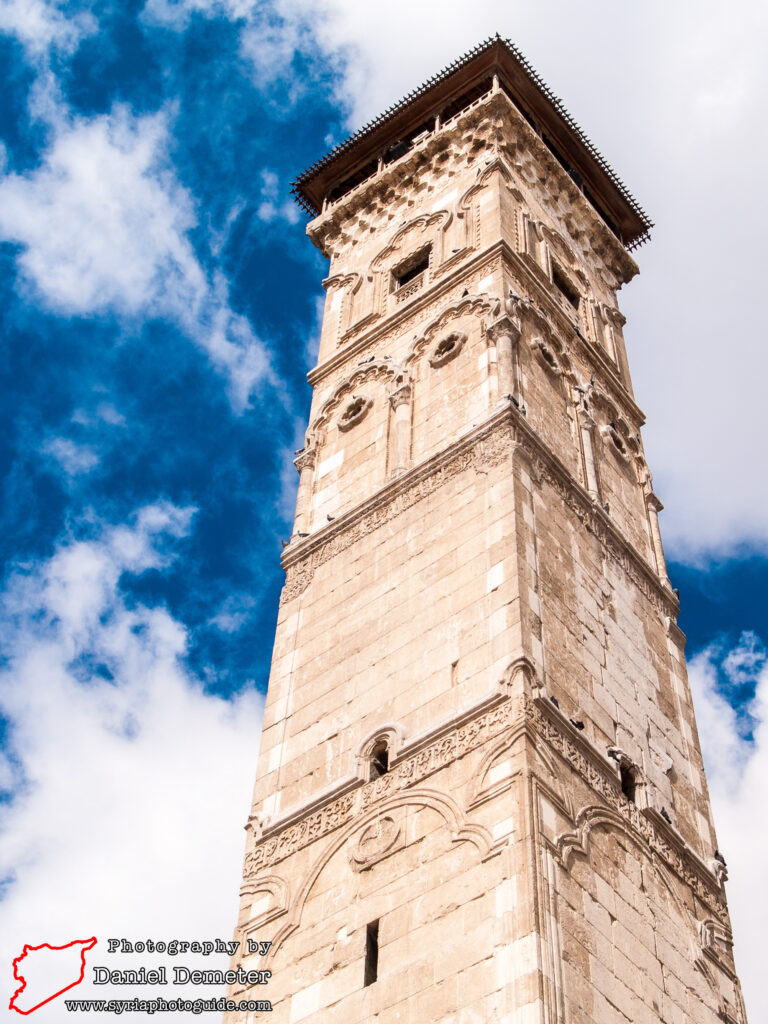
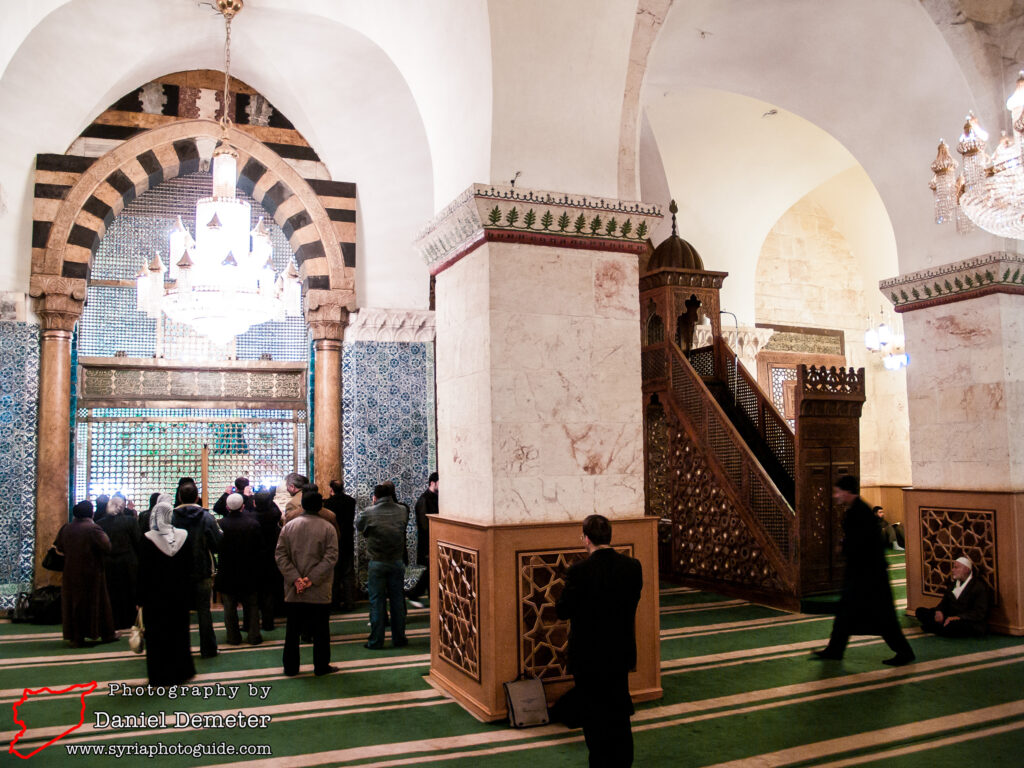
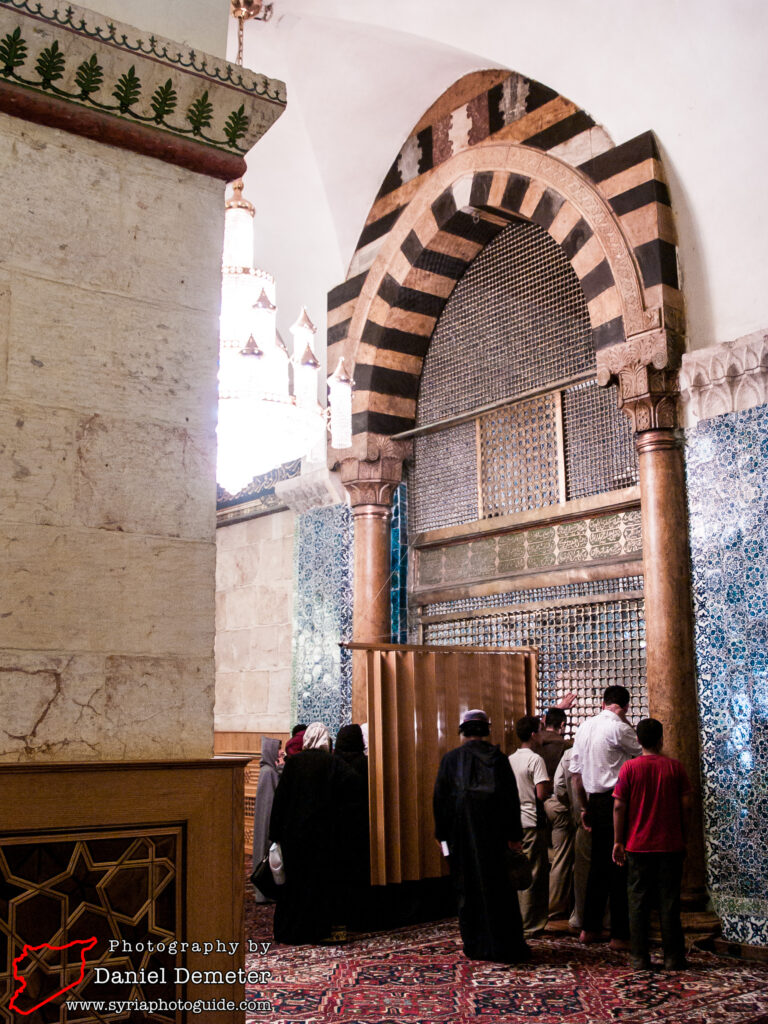
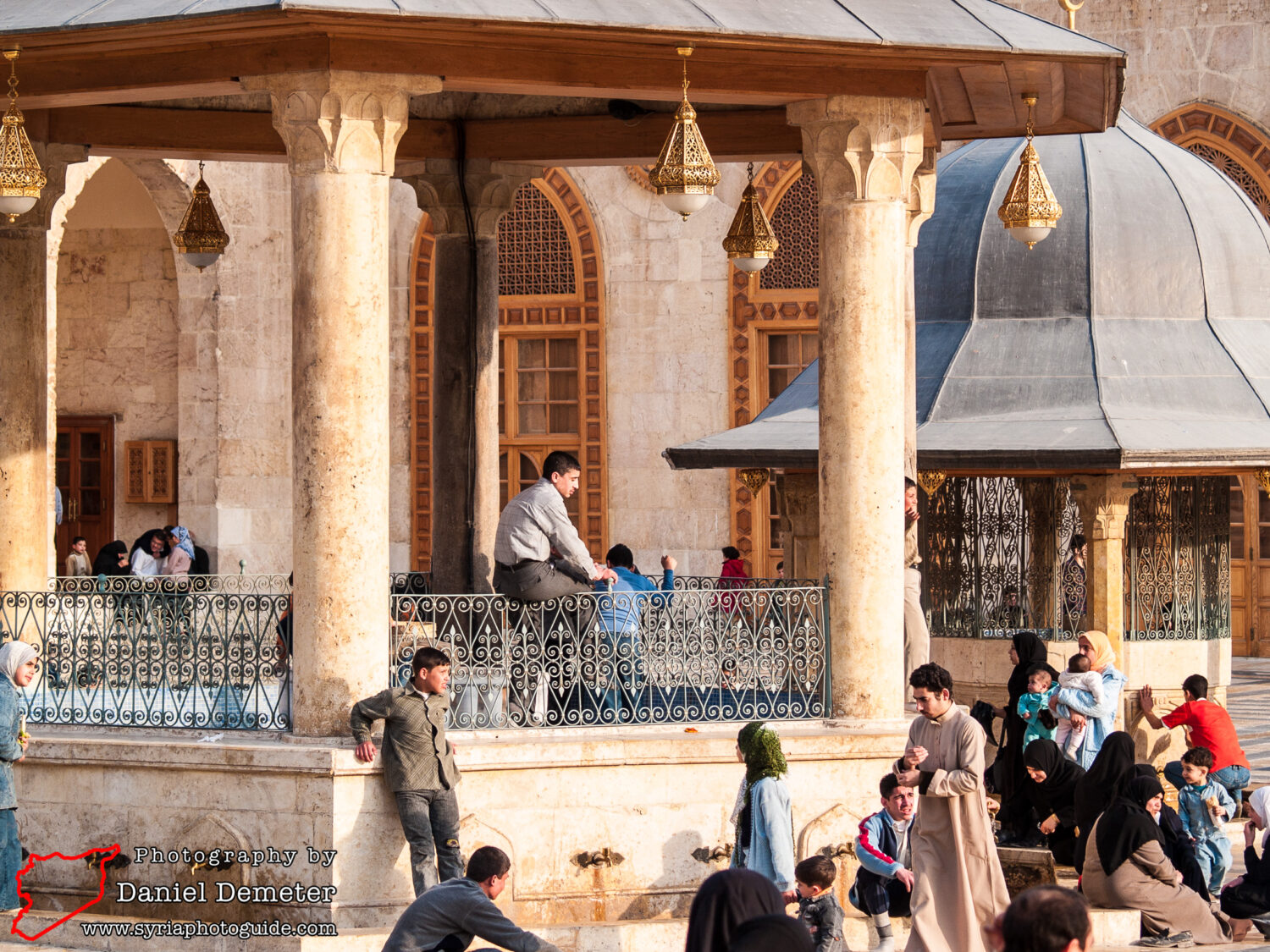
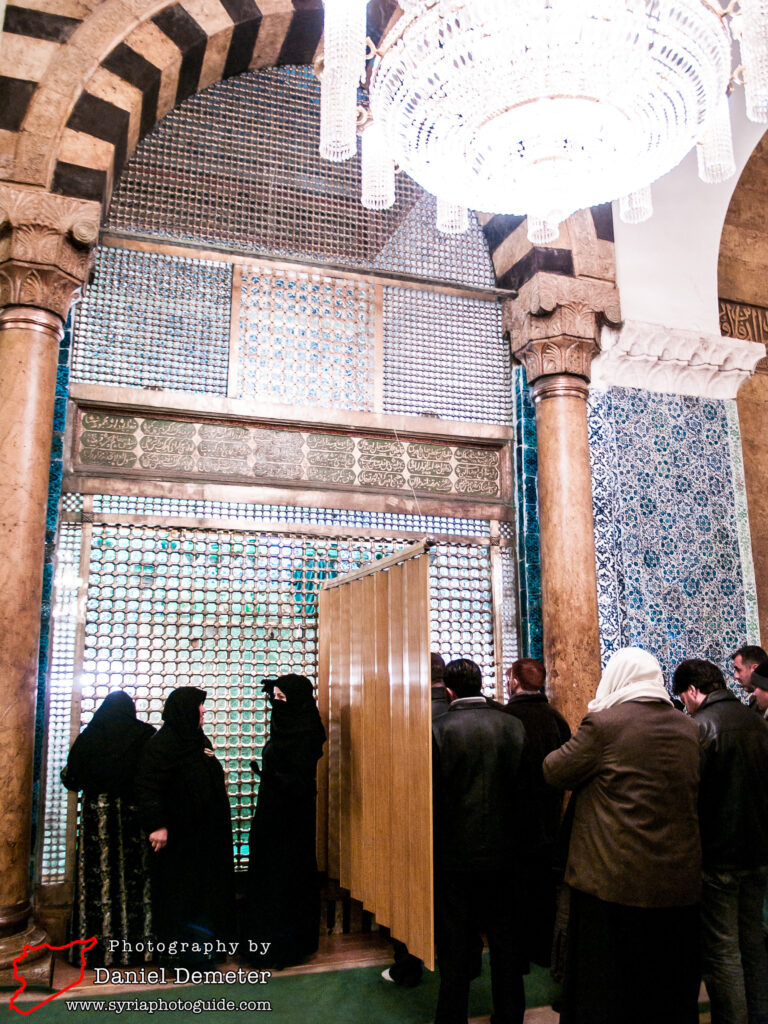
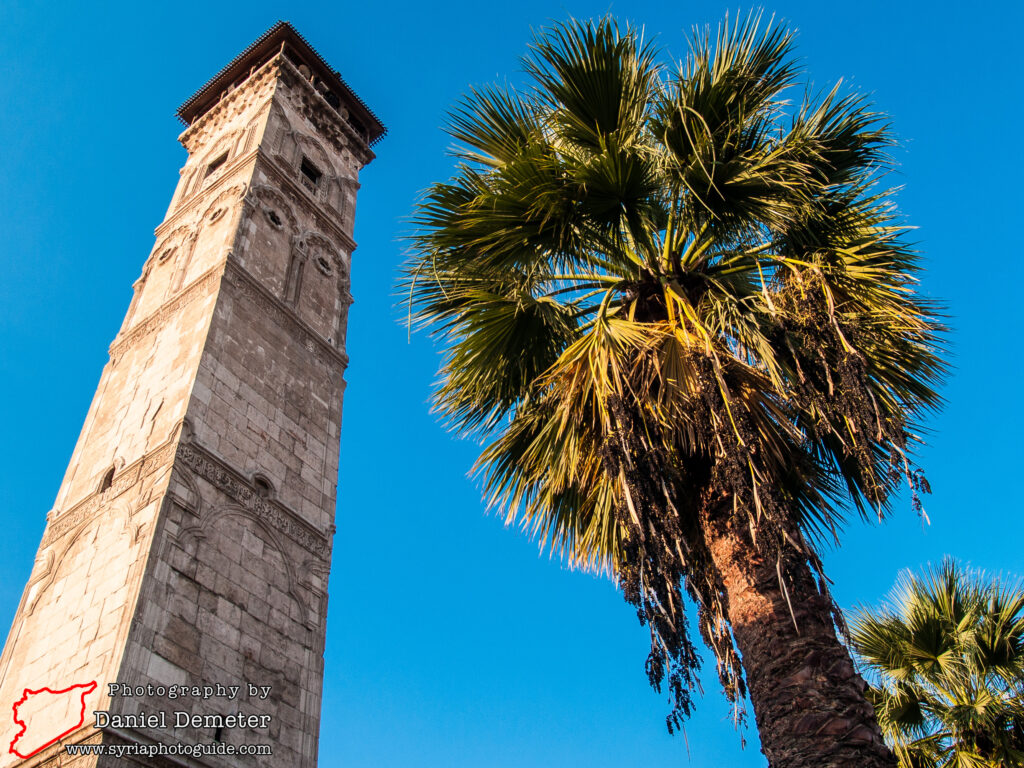
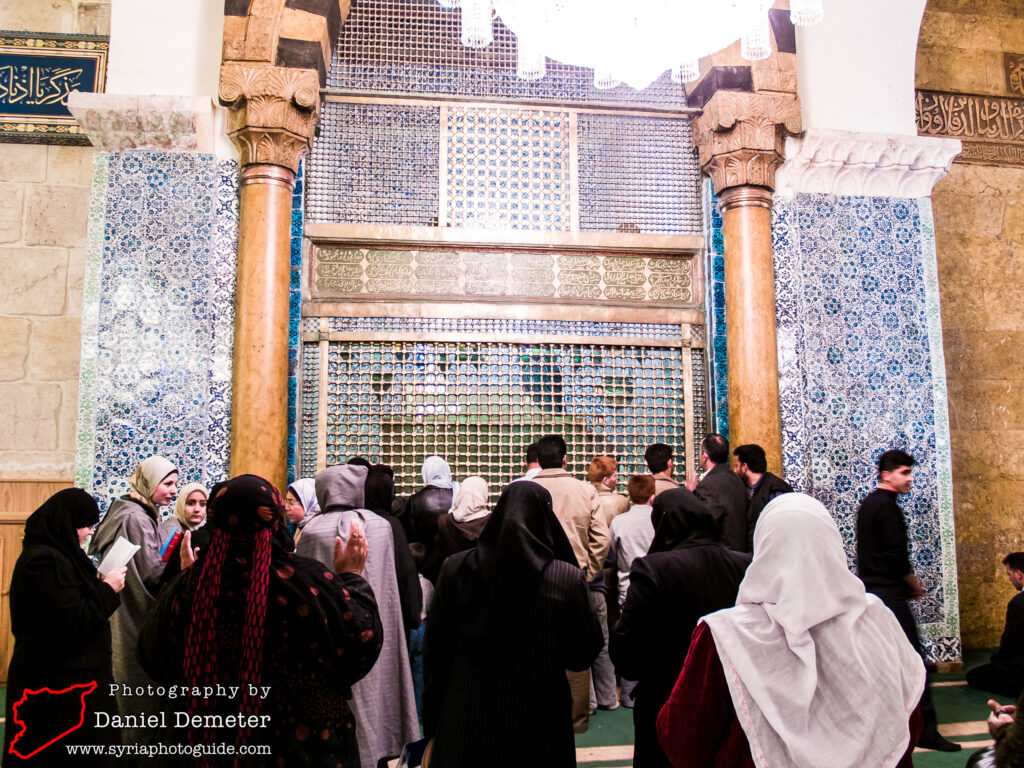
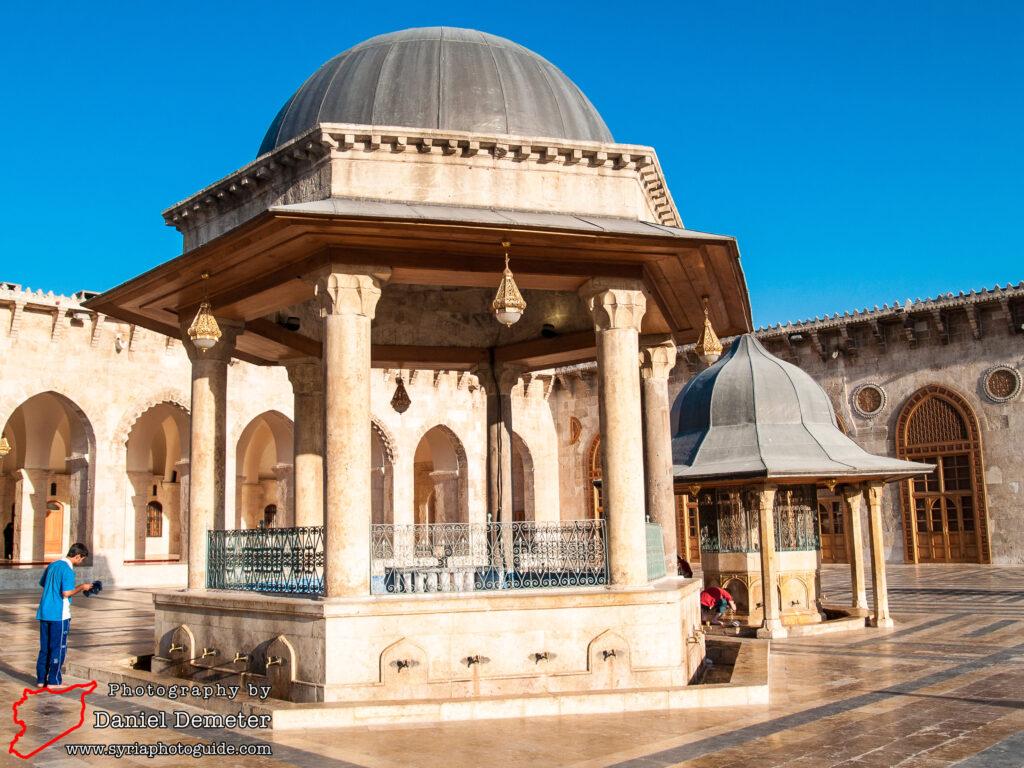
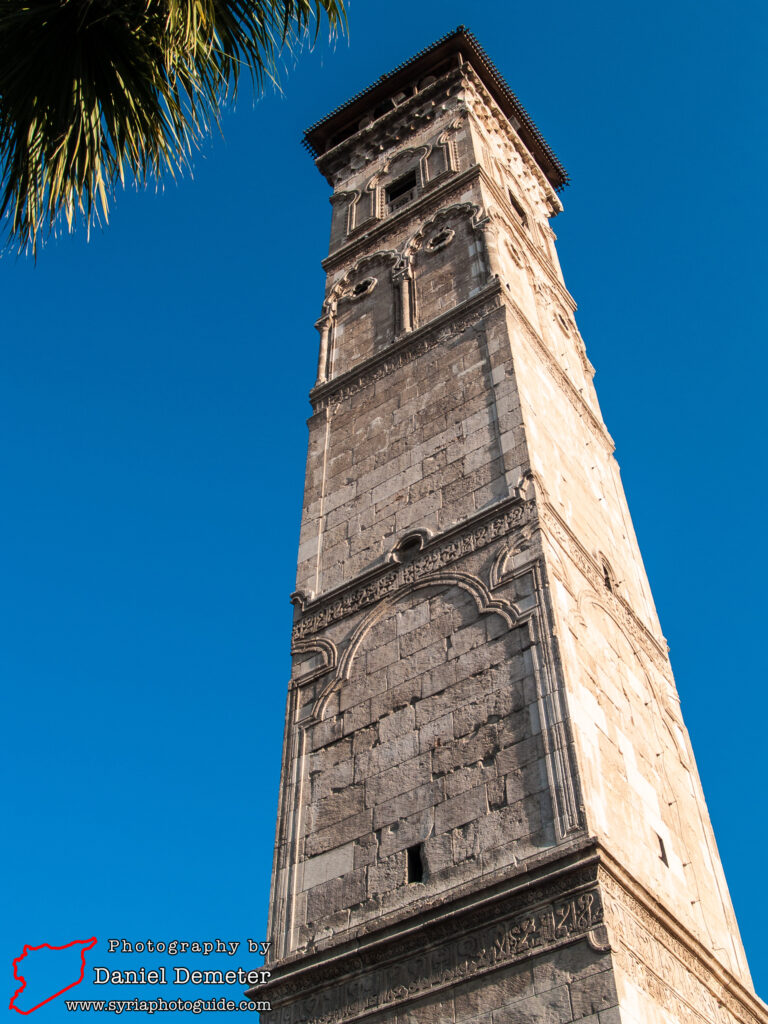
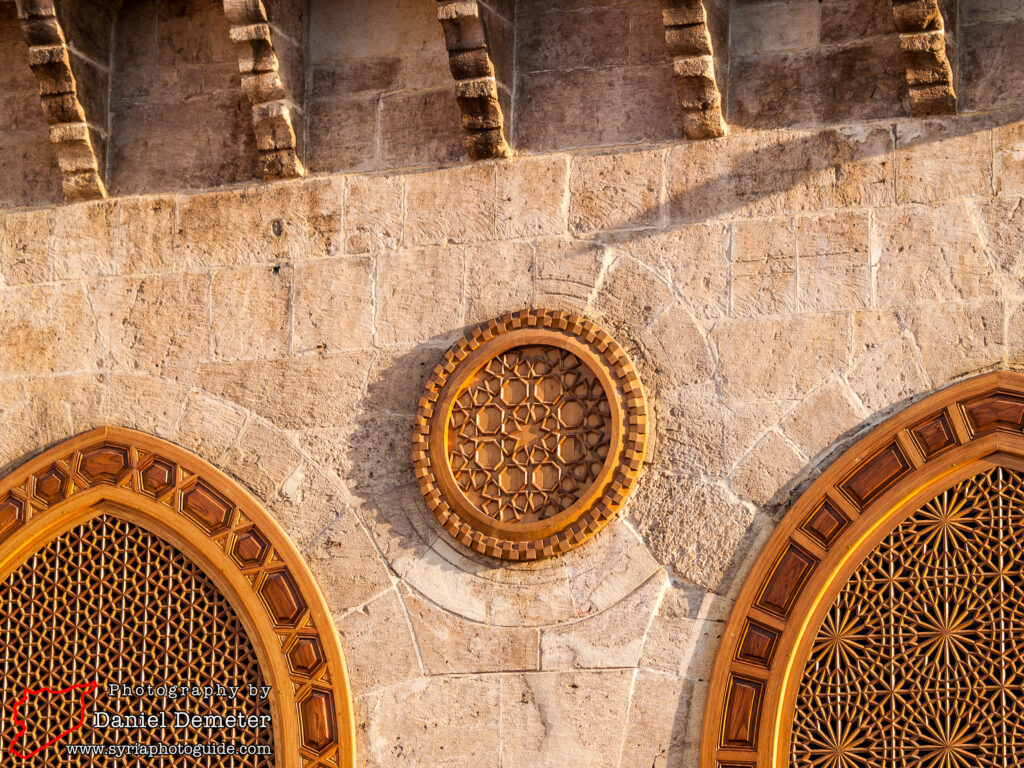
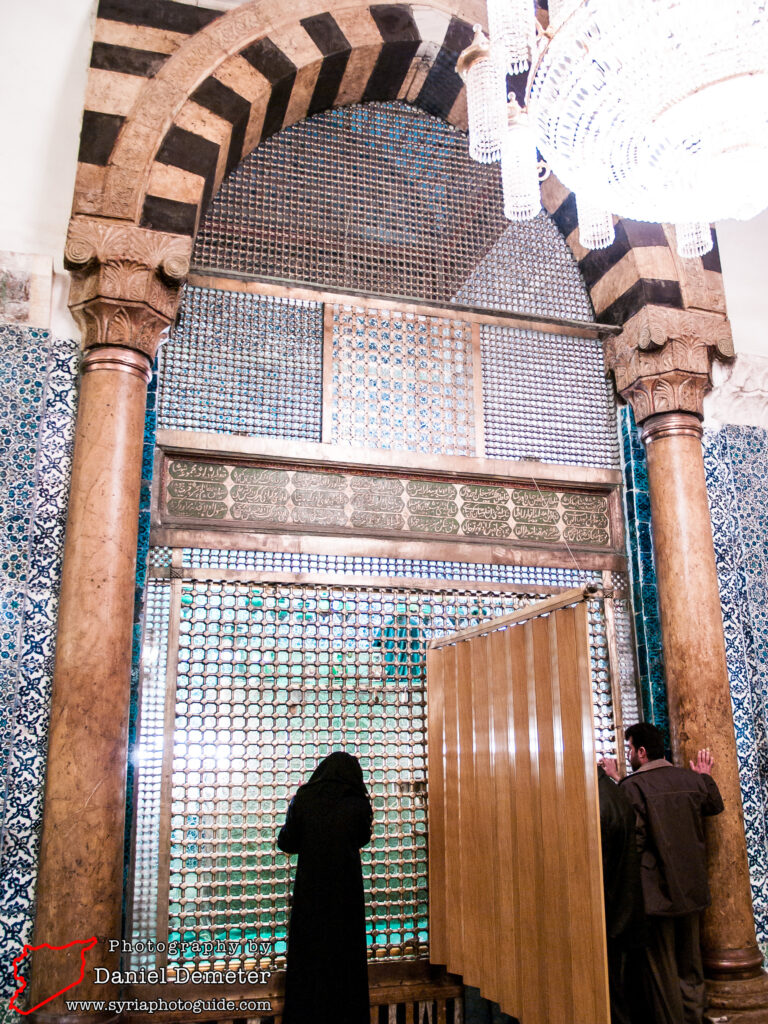
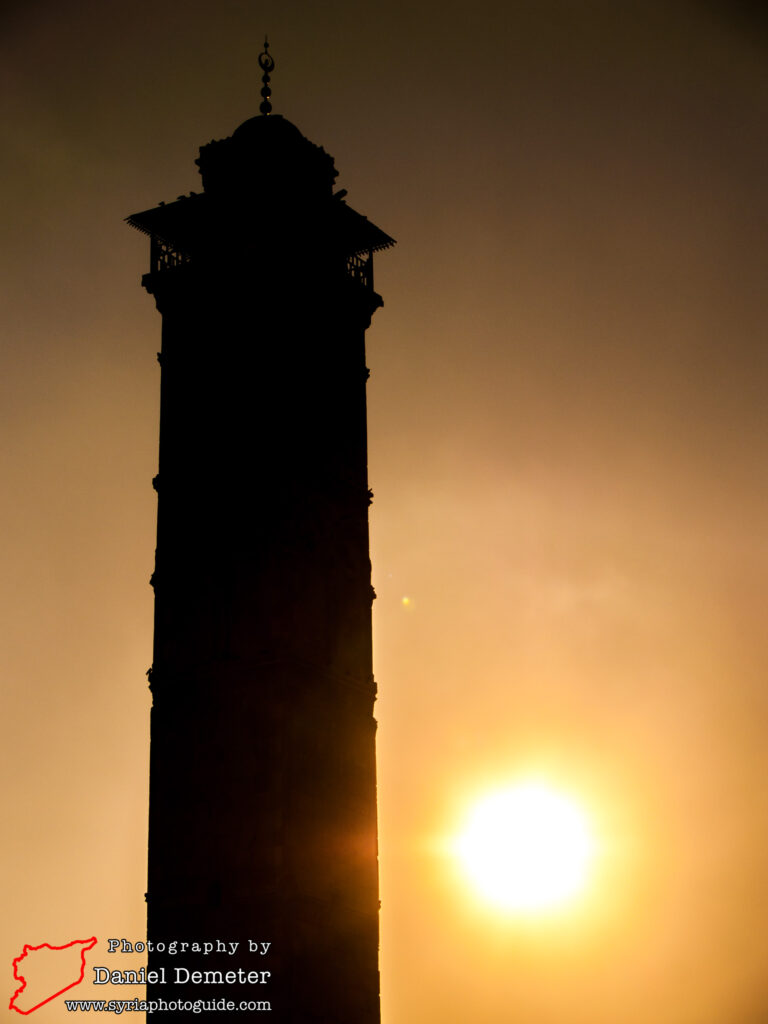
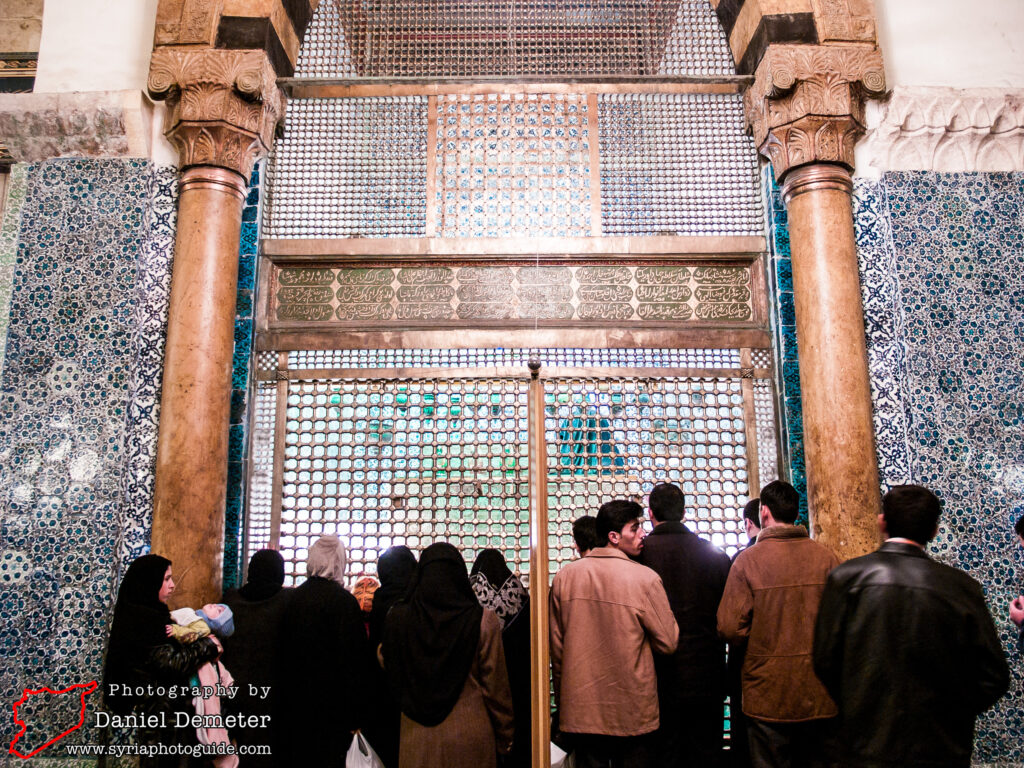
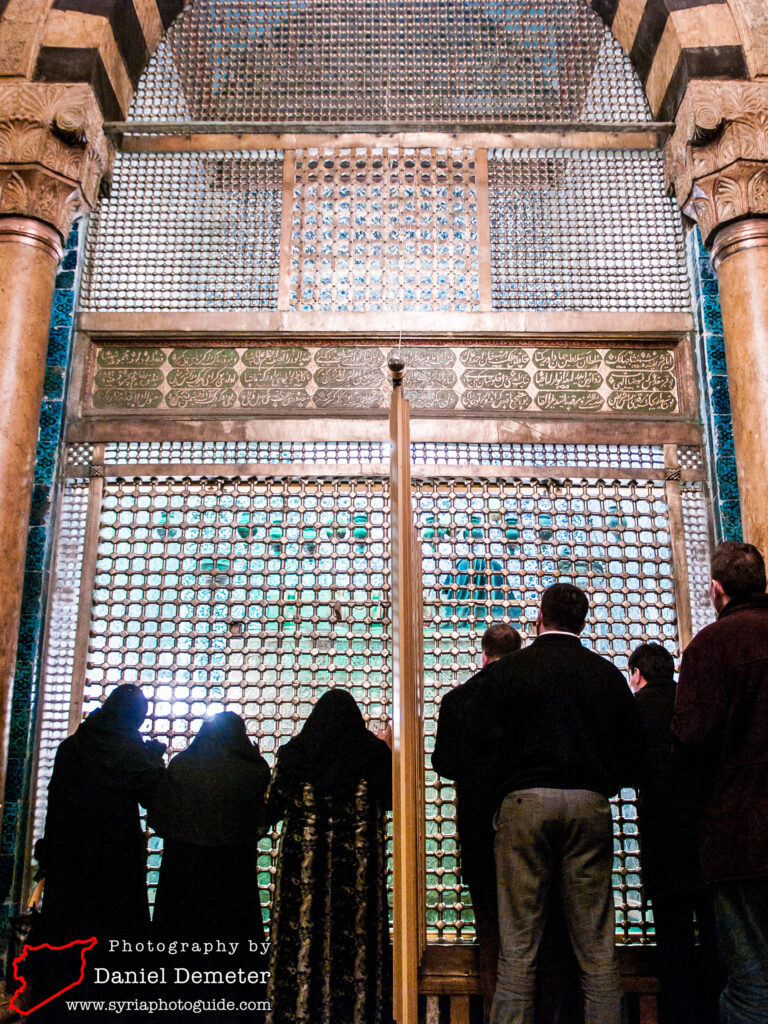
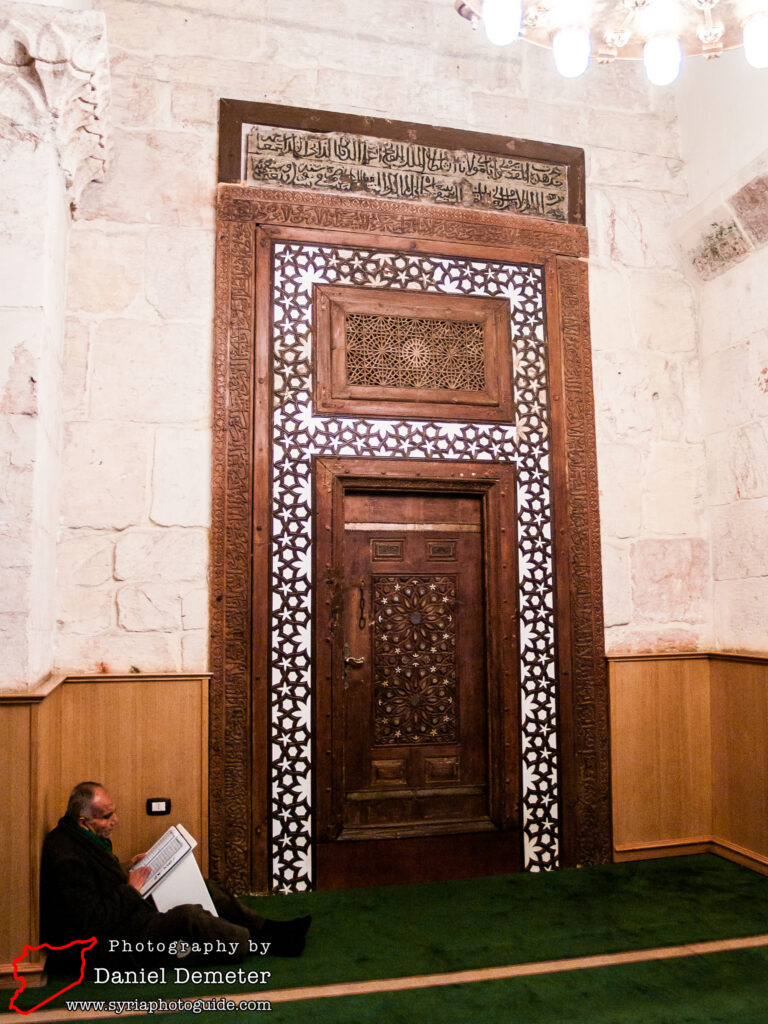
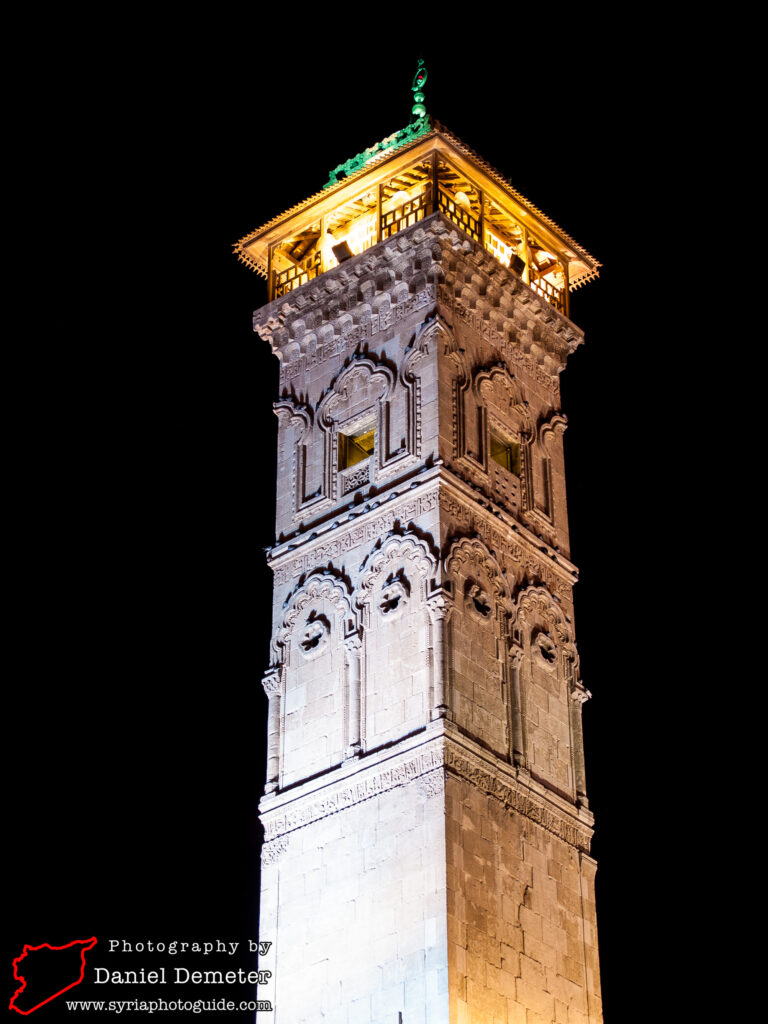
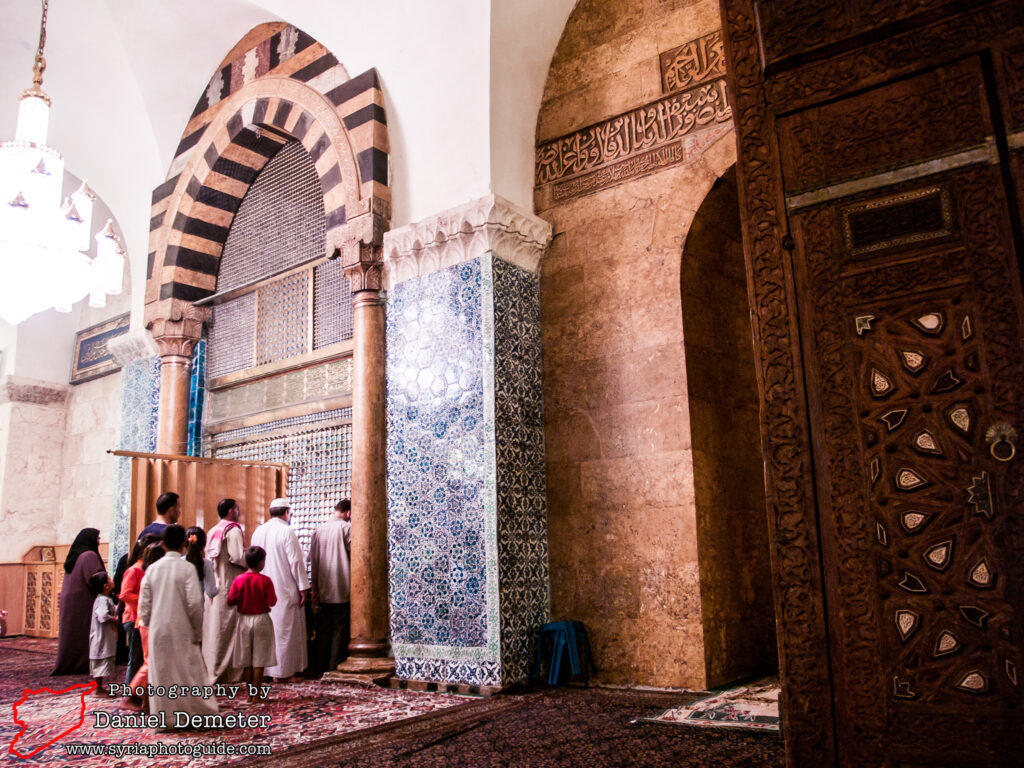
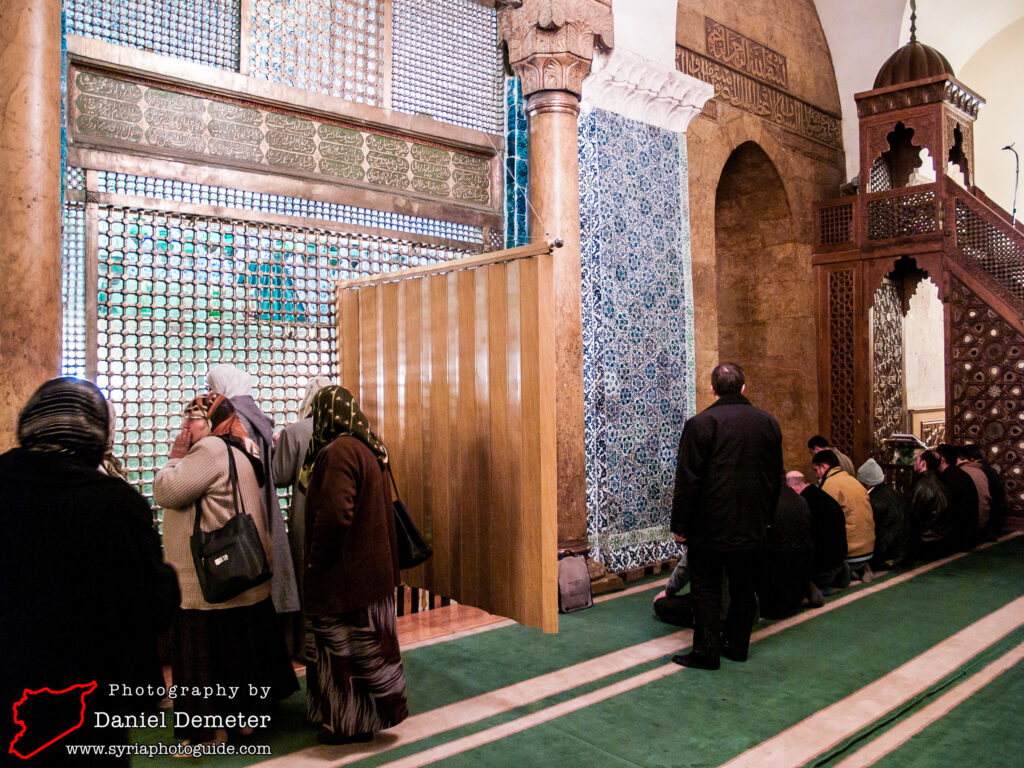
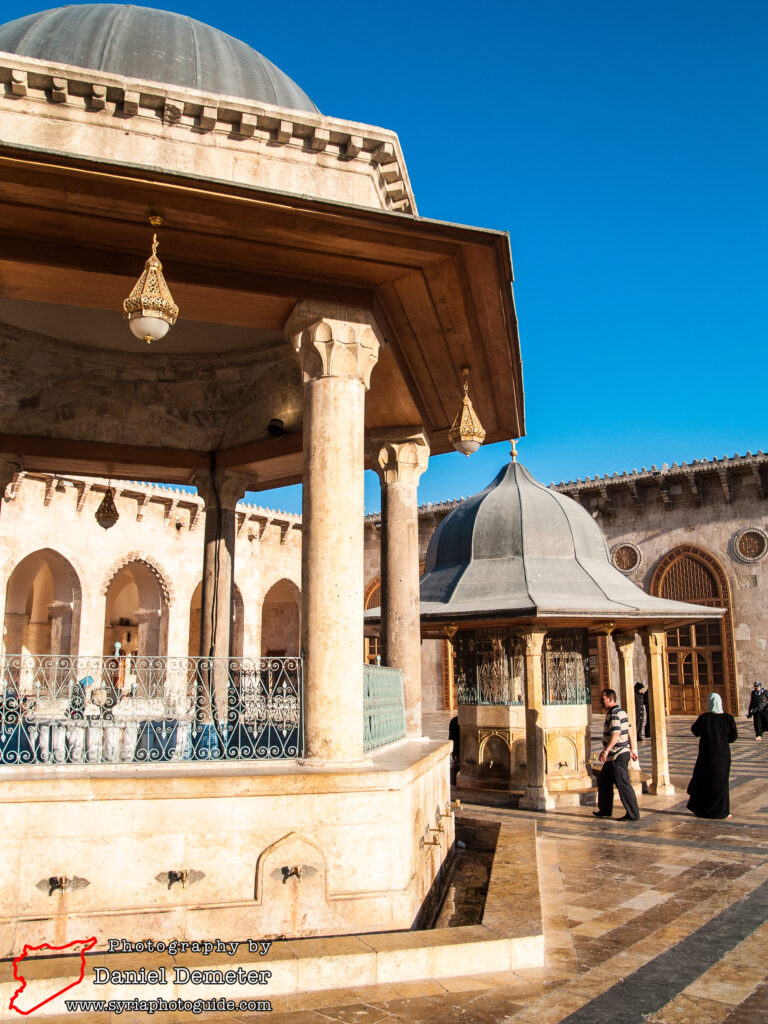
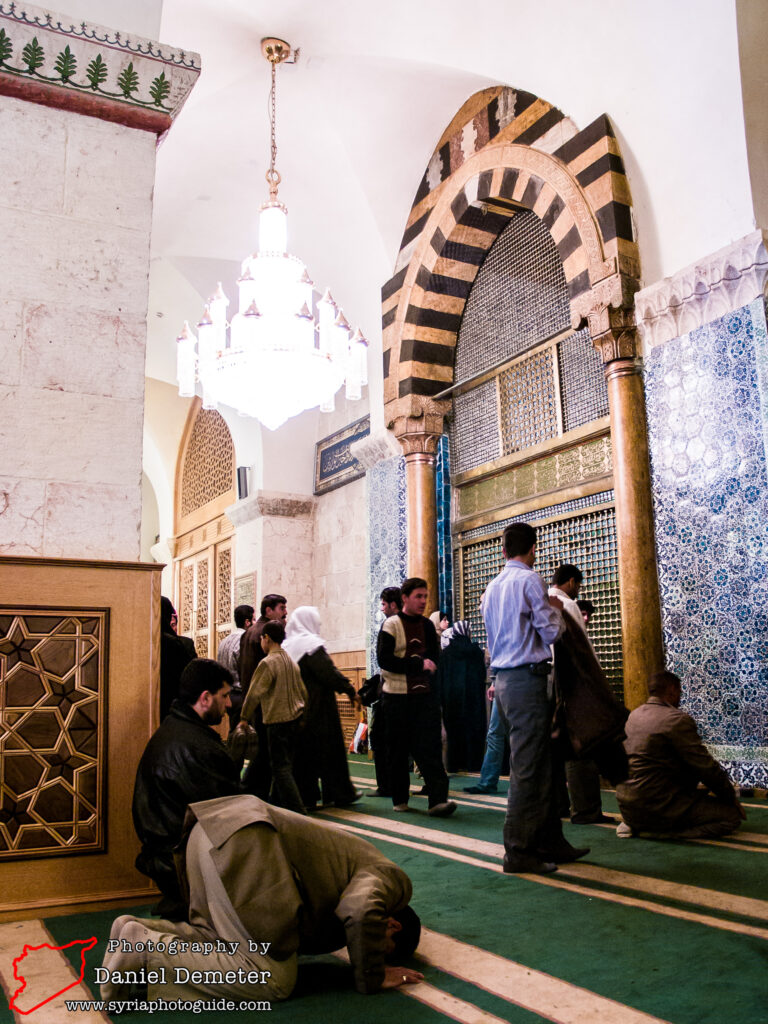
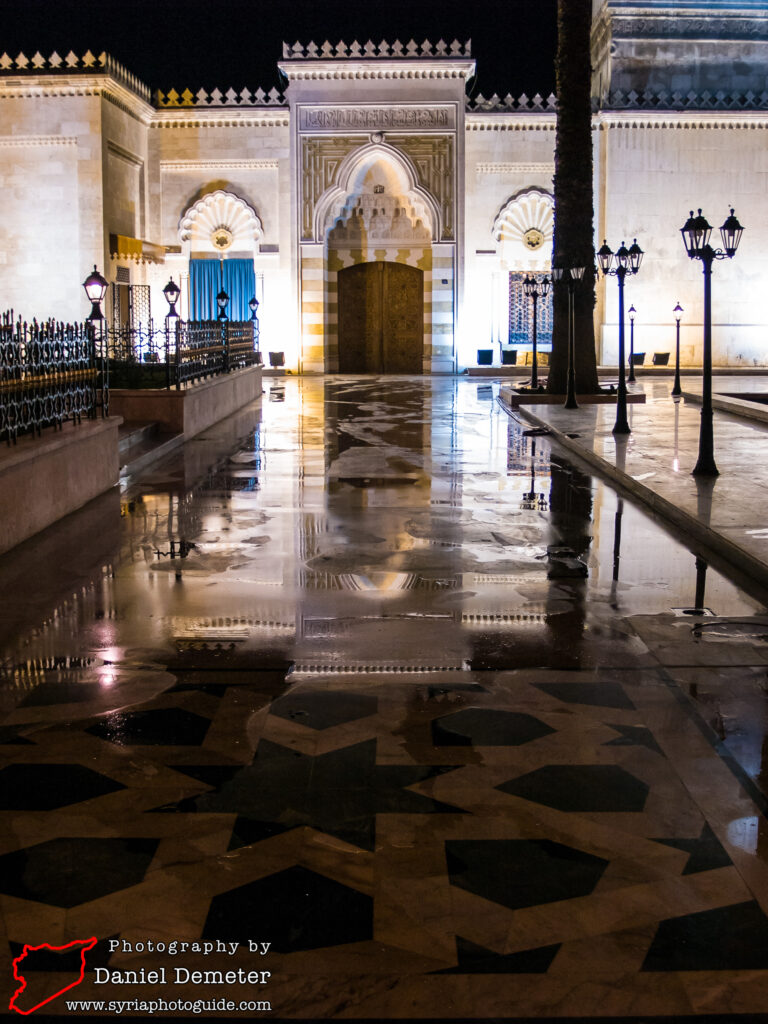
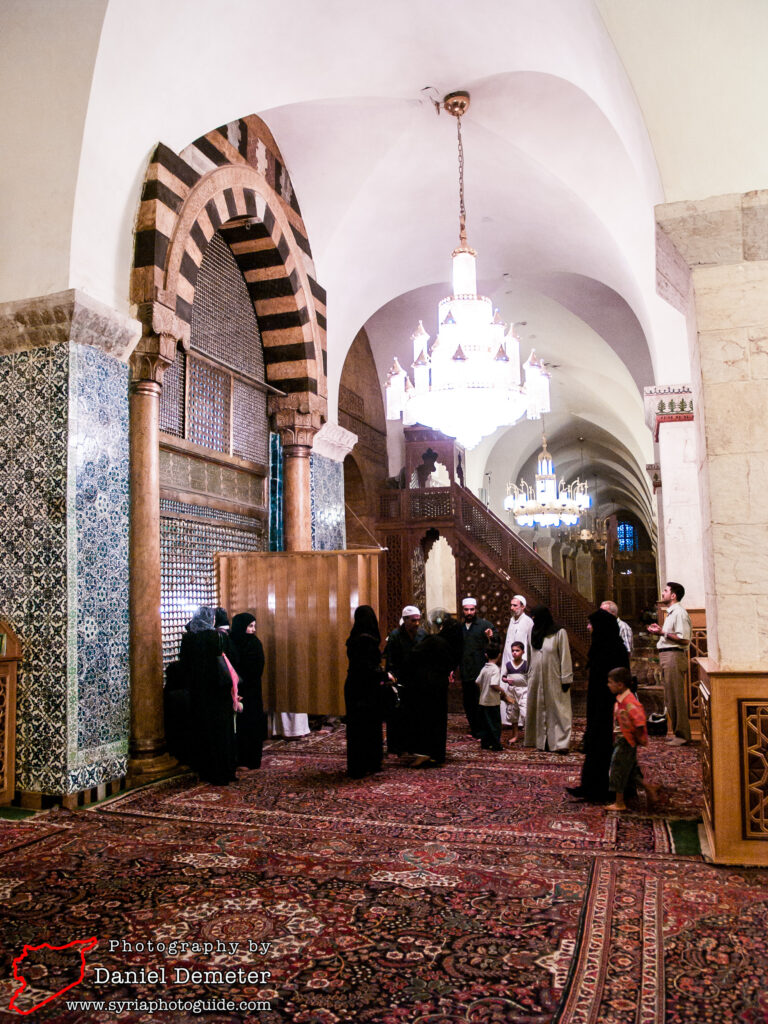
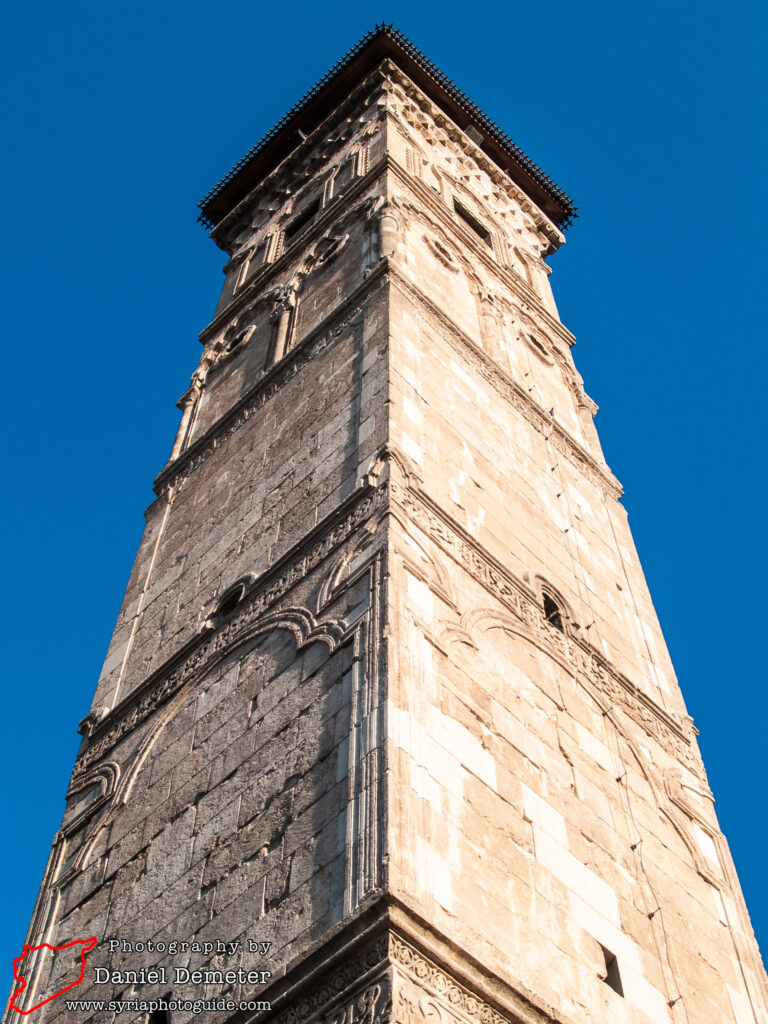
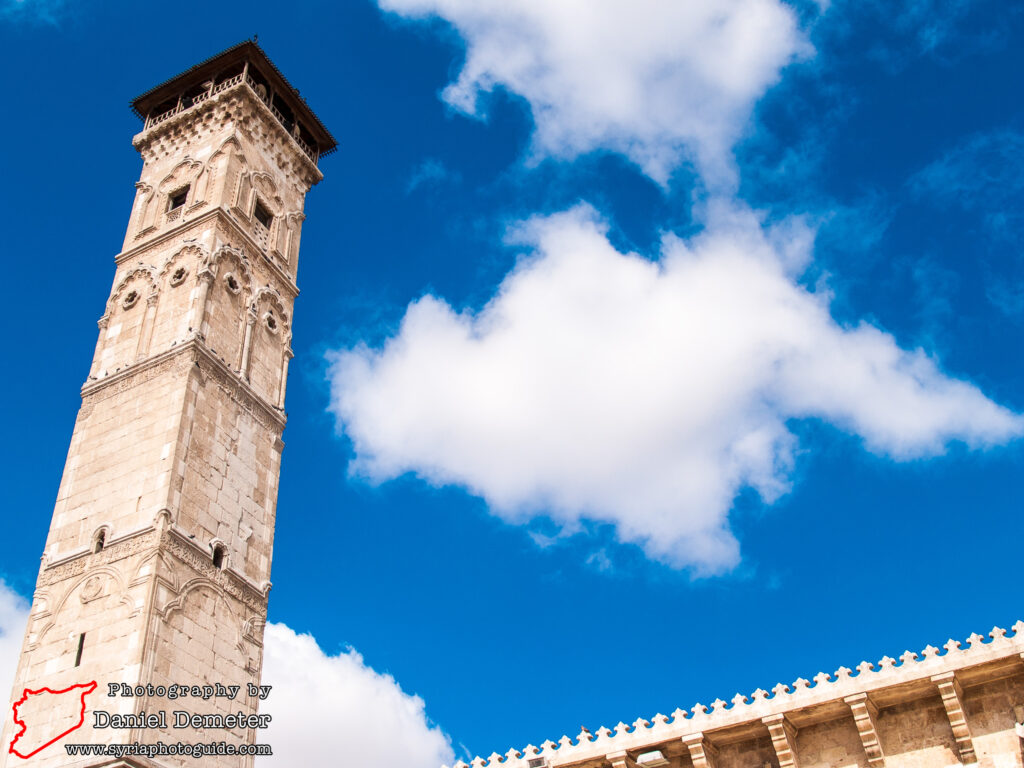
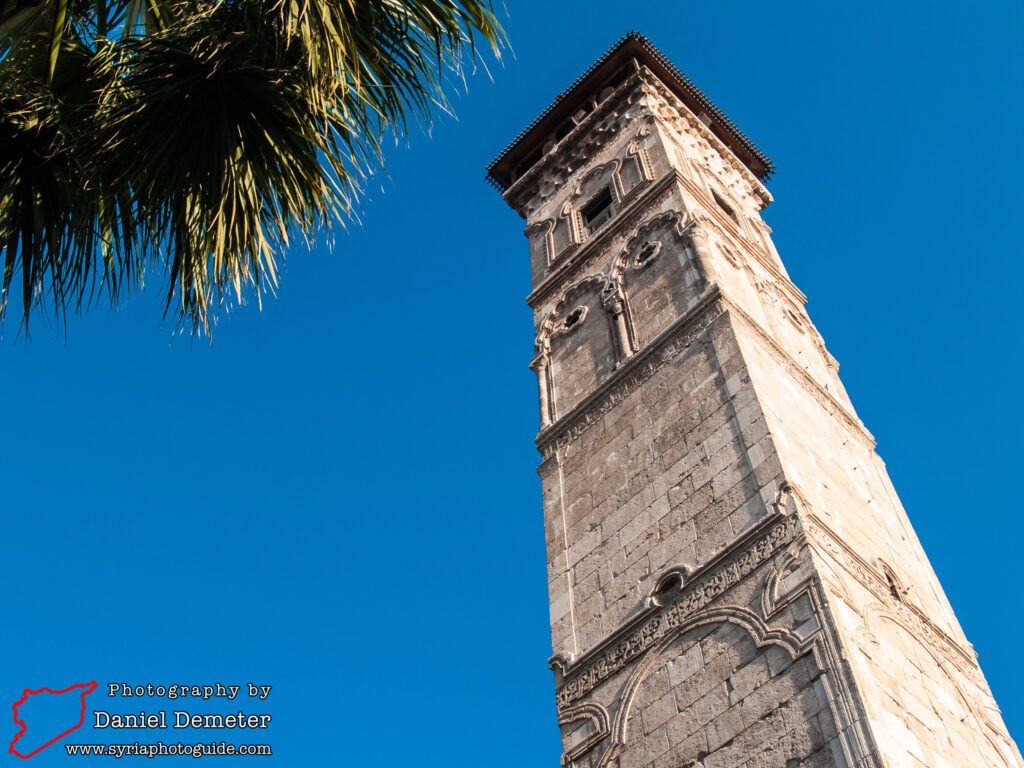
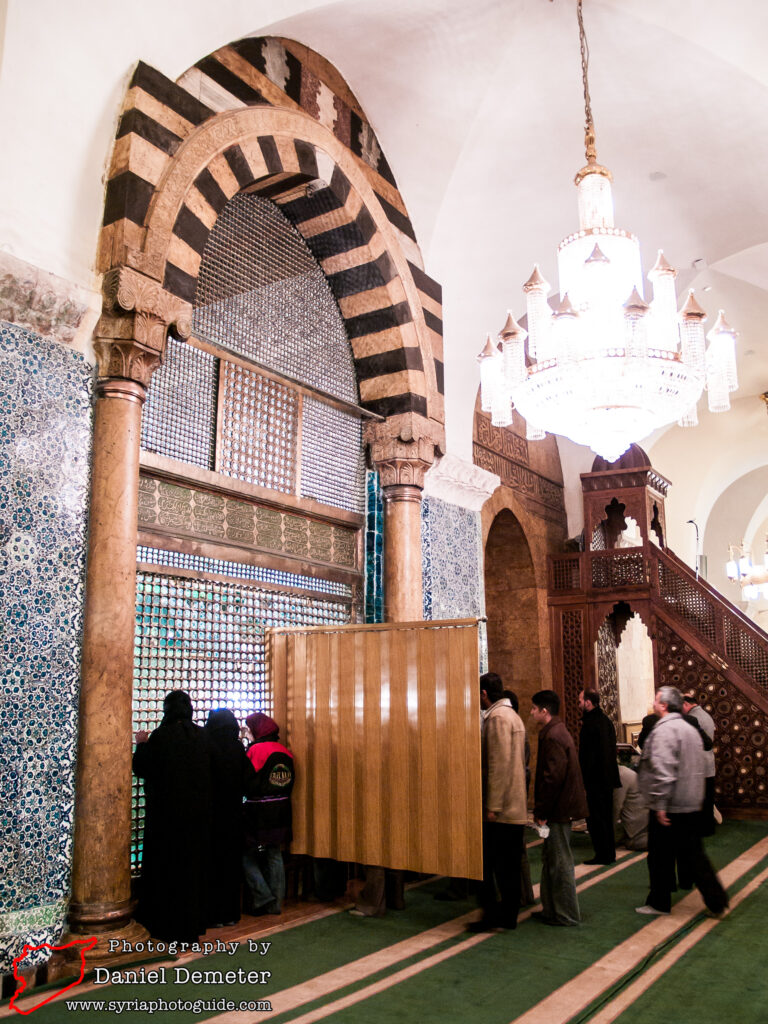
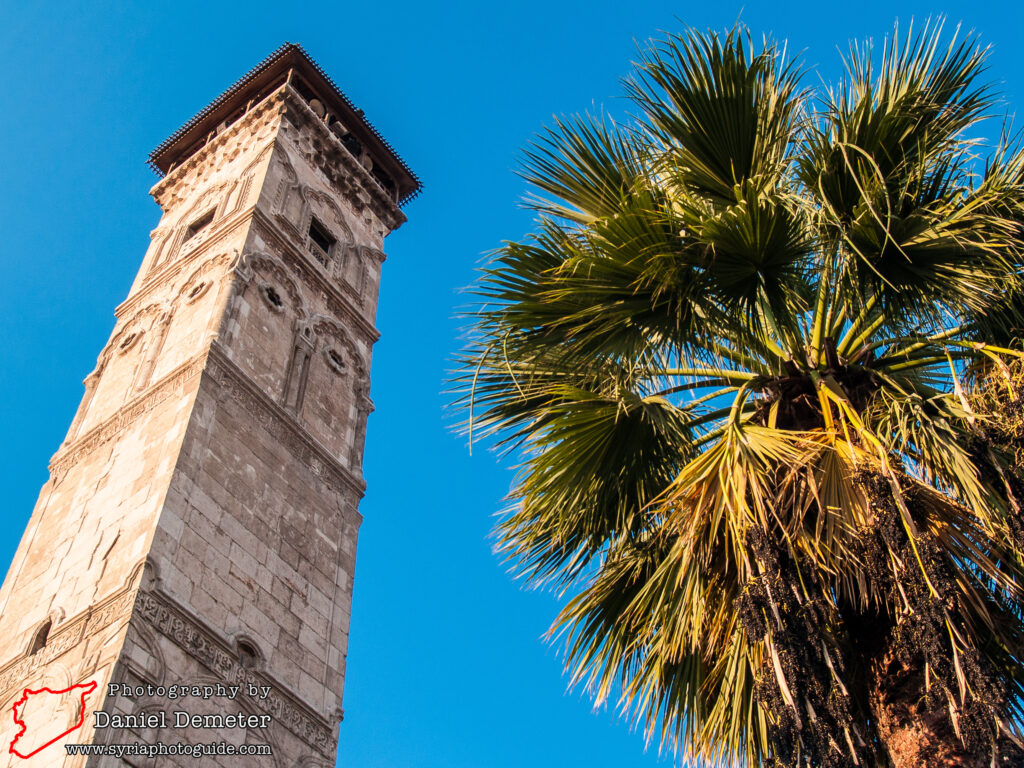
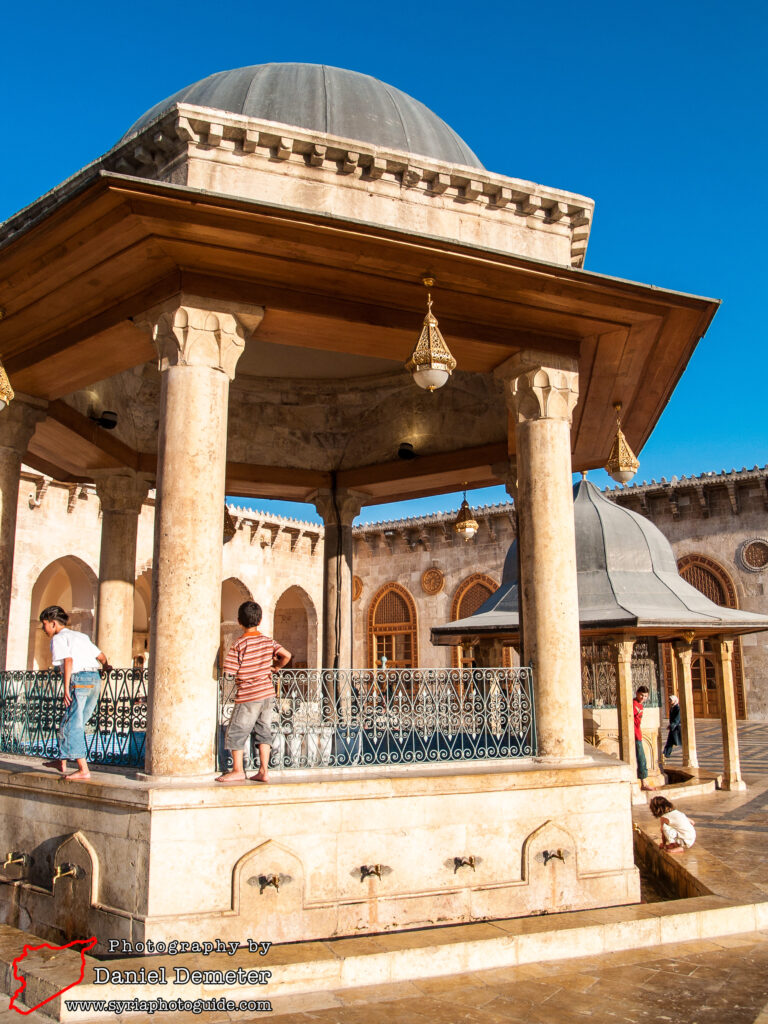
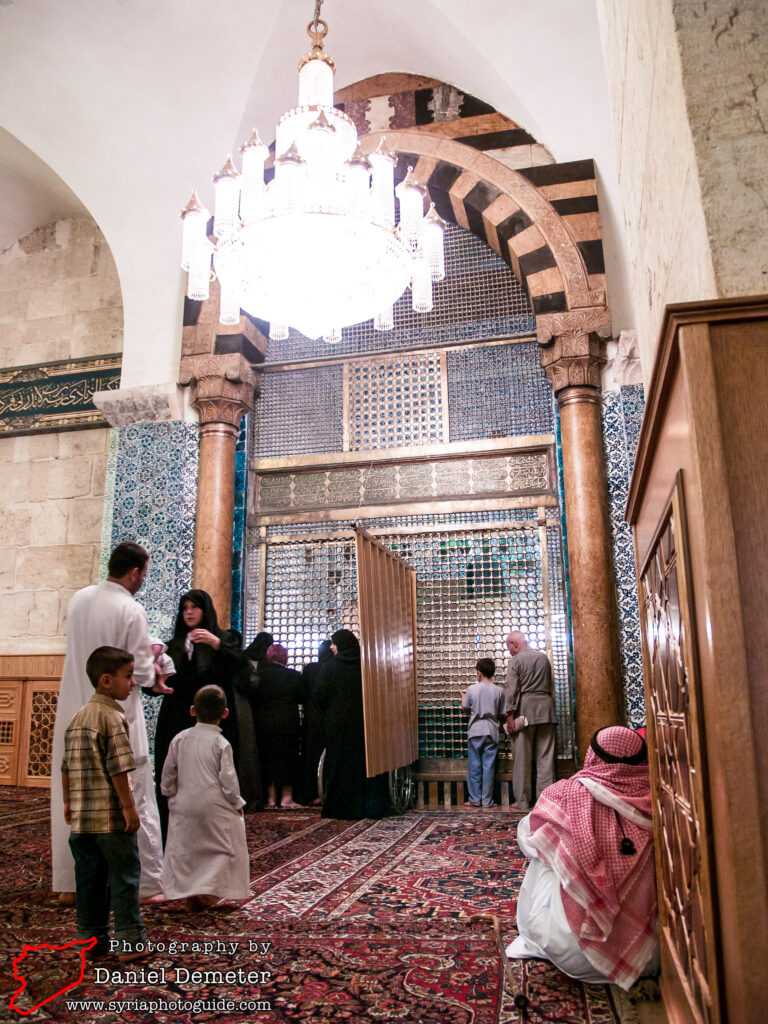
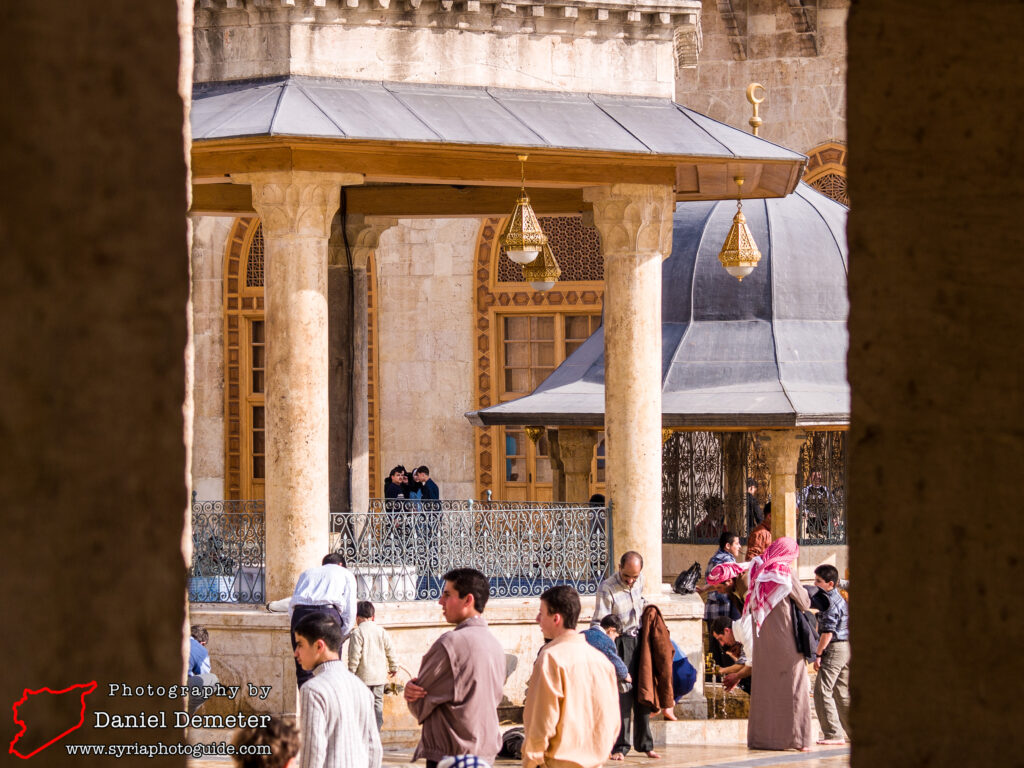
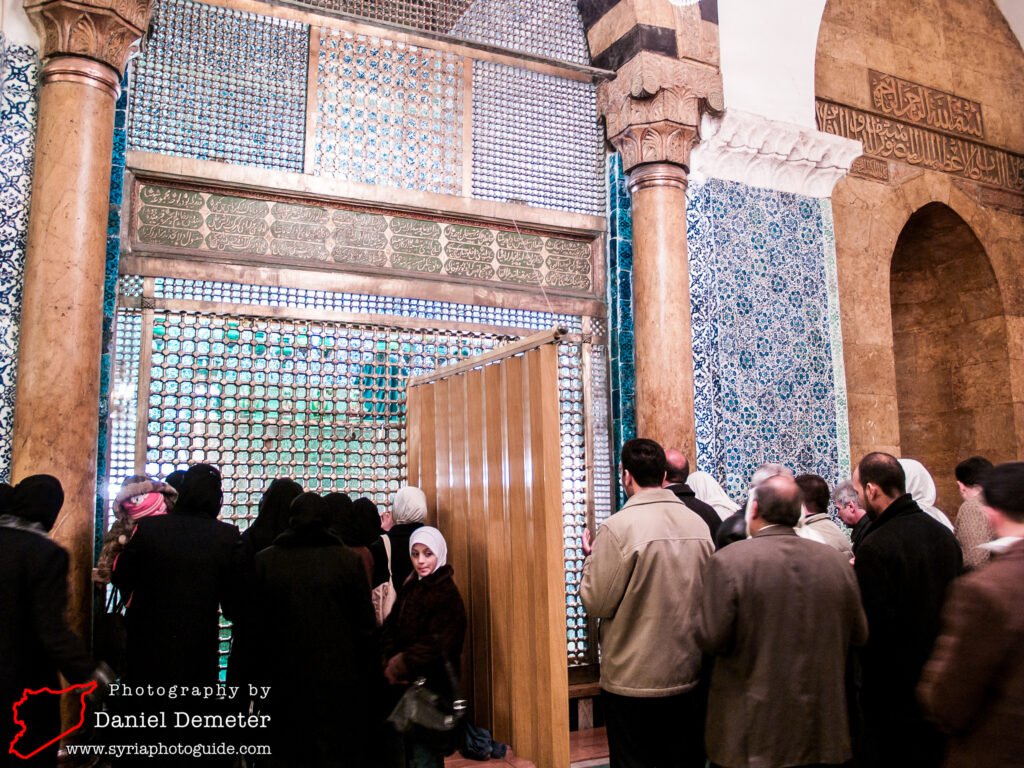
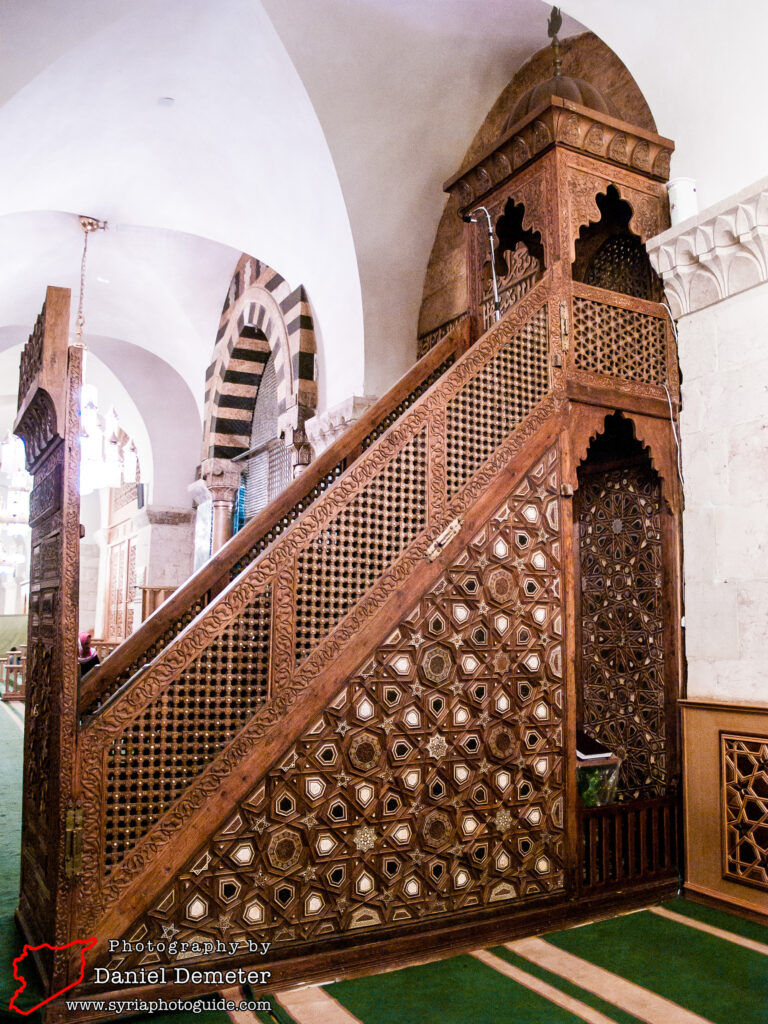
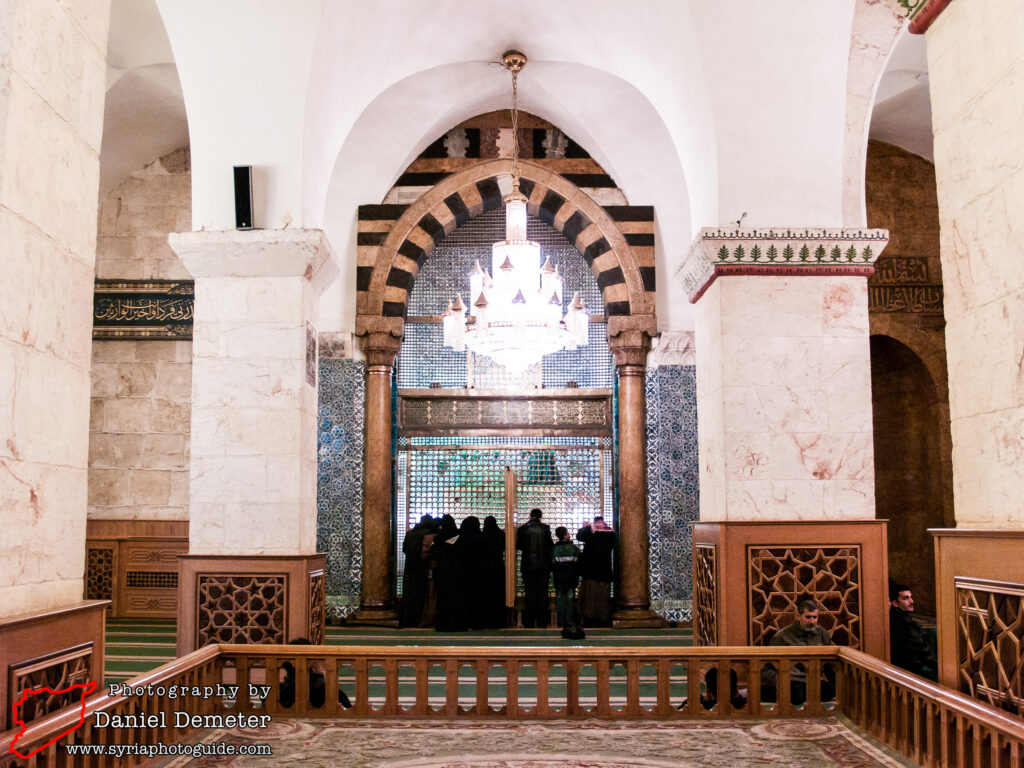
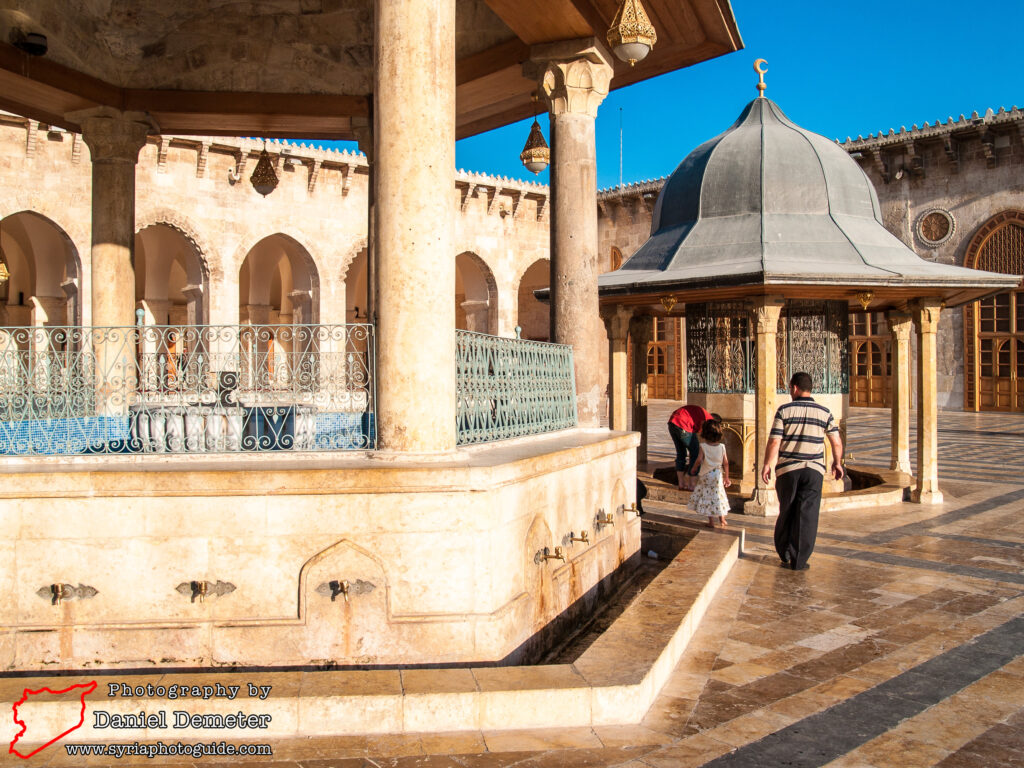
Getting There: The Great Mosque of Aleppo (جامع حلب الكبير) is located in the old city of Aleppo (حلب), about three hundred meters to the west of the Aleppo Citadel (قلعة حلب).
Coordinates: 36°11’58.00″N / 37°09’25.00″E
Transliteration Variants: al-Kabir Mosque
Rating: 8 / 10
